Search Result
Results for "
stabilizer
" in MedChemExpress (MCE) Product Catalog:
14
Biochemical Assay Reagents
6
Isotope-Labeled Compounds
| Cat. No. |
Product Name |
Target |
Research Areas |
Chemical Structure |
-
- HY-N2011
-
|
n-Octyl gallate; stabilizer GA 8
|
|
|
|
Octyl gallate (Progallin O) is widely used as a food additive, with antimicrobial and antioxidant activity . Octyl gallate (Progallin O) shows selective and sensitive fluorescent property . Octyl gallate shows a marked antiviral effect against HSV-1, vesicular stomatitis virus (VSV) and poliovirus .
|
-
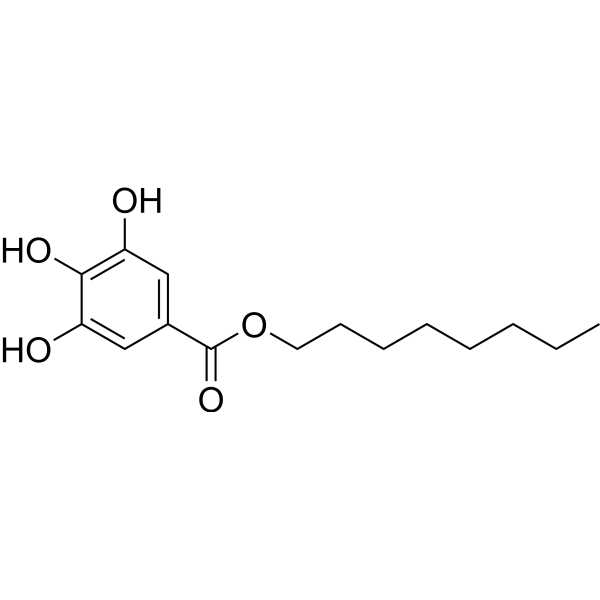
-
- HY-156125
-
|
|
Estrogen Receptor/ERR
|
Others
|
|
14-3-3σ/ERα stabilizer-1 (Compound 181) is a covalent 14-3-3σ/ERα stabilizer. 14-3-3σ/ERα stabilizer-1 can be used for research of molecular glues .
|
-

-
- HY-145890
-
|
|
Others
|
Inflammation/Immunology
|
|
LC kinetic stabilizer-2 is a potent amyloidogenic immunoglobulin light chain (LC) kinetic stabilizer with an EC50 of 24 nM .
|
-
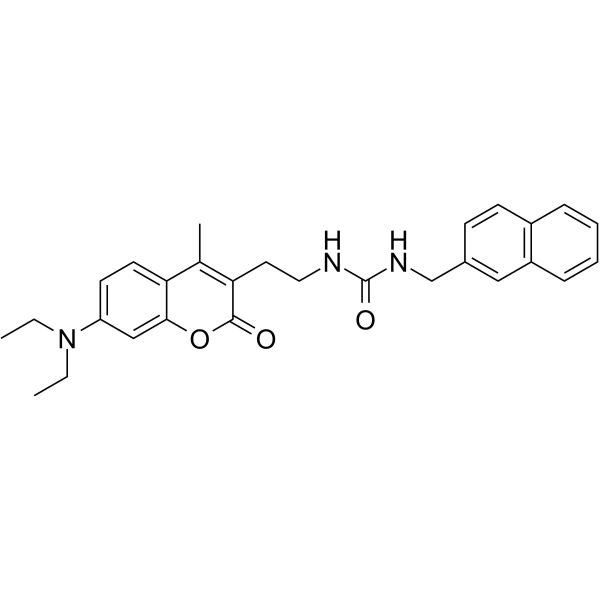
-
- HY-149779
-
|
|
Calcium Channel
|
Cardiovascular Disease
|
|
RyR2 stabilizer-1 (compound 12a) is a potent RyR2 stabilizer and SERCA2a activator with EC50s of 2.7 μM for RyR2 and 383 nM for SERCA2. RyR2 stabilizer-1 inhibits Ca 2+ leakage from the SR RyR2 while promoting SERCA2 to pump Ca 2+ back to SR, which make RyR2 stabilizer-1 possible to prevent cardiac arrhythmias .
|
-

-
- HY-145889
-
|
|
Others
|
Others
|
|
LC kinetic stabilizer-1 (compound 21) is a potent and selective amyloidogenic immunoglobulin light chain kinetic stabilizer with EC50s of 140 and 74.1 nM for WIL-FL * and WIL-FL * T46L/F49Y, respectively. WIL-FL is an amyloidogenic FL LC dimer .
|
-
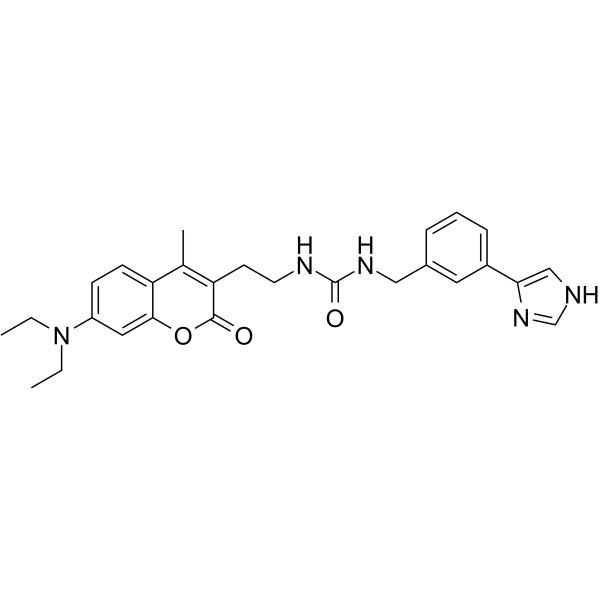
-
- HY-108285
-
|
|
Others
|
Inflammation/Immunology
|
|
(Rac)-Telmesteine is a protease inhibitor and is thus a suitable enzyme stabilizer extracted from patent WO 2017220302 A1, compound II-1. (Rac)-Telmesteine can be used as an enzyme stabilizer in protease-containing detergents and cleaning agents .
|
-
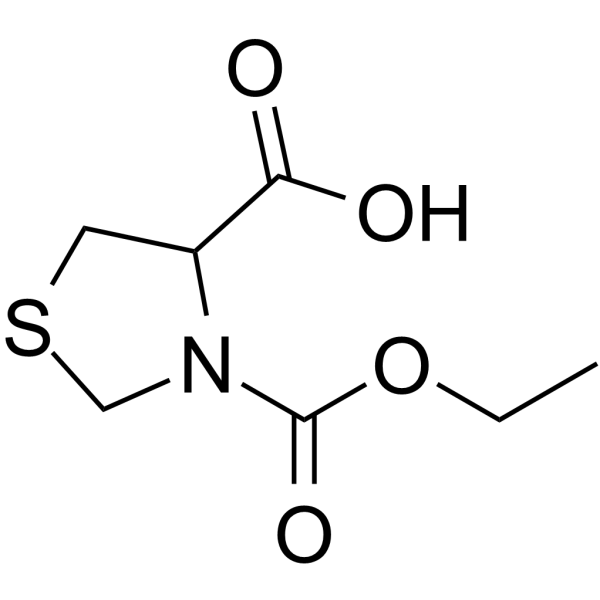
-
- HY-153767
-
|
|
MDM-2/p53
|
Cancer
|
|
PK095 is a p53 mutant stabilizer. PK095 can be used for research of cancer .
|
-
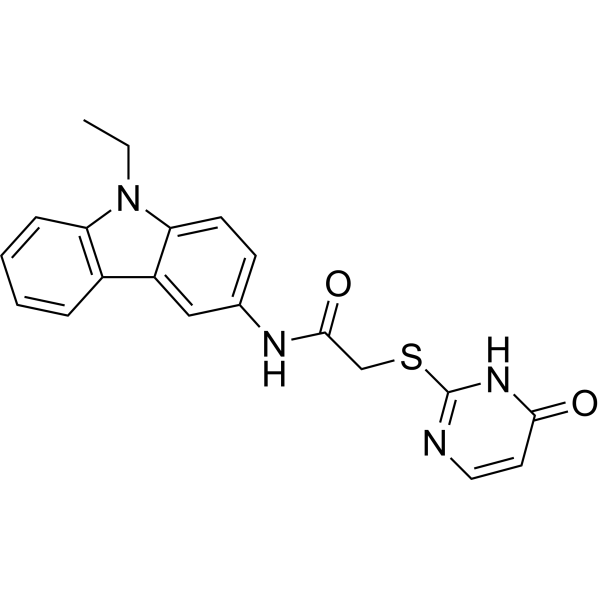
-
- HY-113811
-
|
DIXDS; Diproxide
|
Others
|
Others
|
|
Diisopropyl xanthogen disulfide (DIXDS) is a superaccelerator for natural rubber and latex, styrene-butadiene rubber and latex, nitrile butadiene rubber and recycled rubber. It can also be used as a neoprene rubber modifier and an insoluble sulfur stabilizer .
|
-
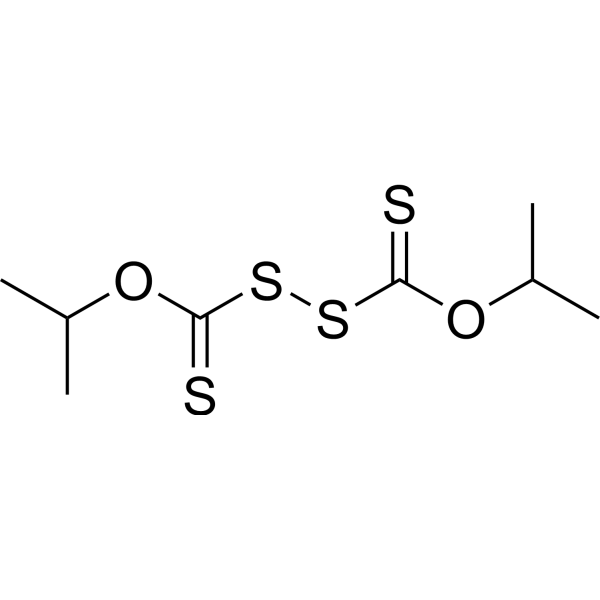
-
- HY-155206
-
|
|
5-HT Receptor
|
Neurological Disease
|
|
(+)-OSU6162 is an stabilizer on dopaminergic and serotonergic brain signaling. (+)-OSU6162 is a partial agonist of 5-HT2A receptor. (+)-OSU6162 can be used for neurological research .
|
-
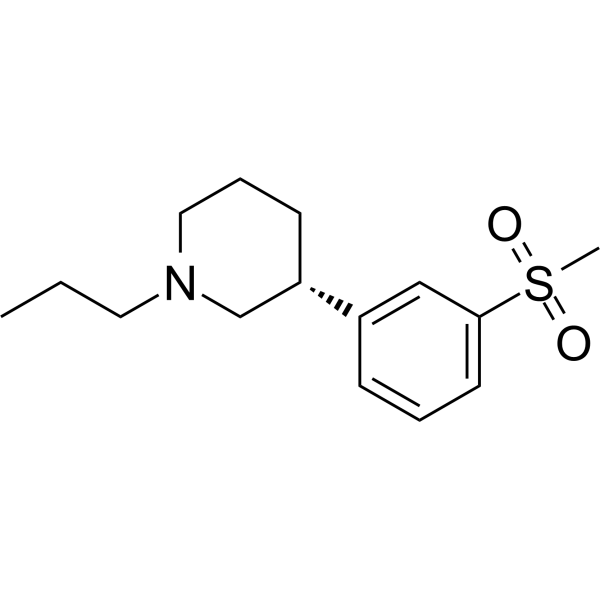
-
- HY-109027
-
|
N91115
|
GSNOR
CFTR
|
Inflammation/Immunology
|
|
Cavosonstat (N91115) is an orally active S-nitrosoglutathione reductase (GSNOR) inhibitor. Cavosonstat is a CFTR stabilizer, and can be used for cystic fibrosis research .
|
-
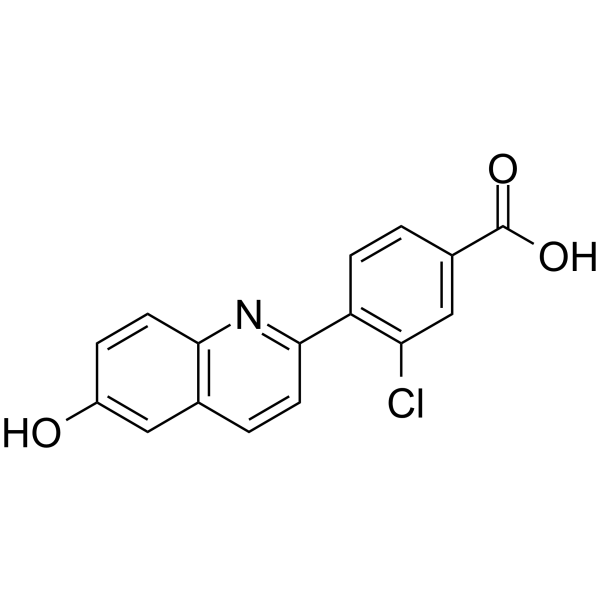
-
- HY-153193
-
|
|
GLP Receptor
|
Metabolic Disease
|
|
LSN3160440 is an allosteric modulator of GLP-1R, which acts as a protein–protein interaction (PPI) stabilizer or molecular glue to assist in the adhesion of inactive GLP-1 (9-36) NH2 on GLP-1R .
|
-
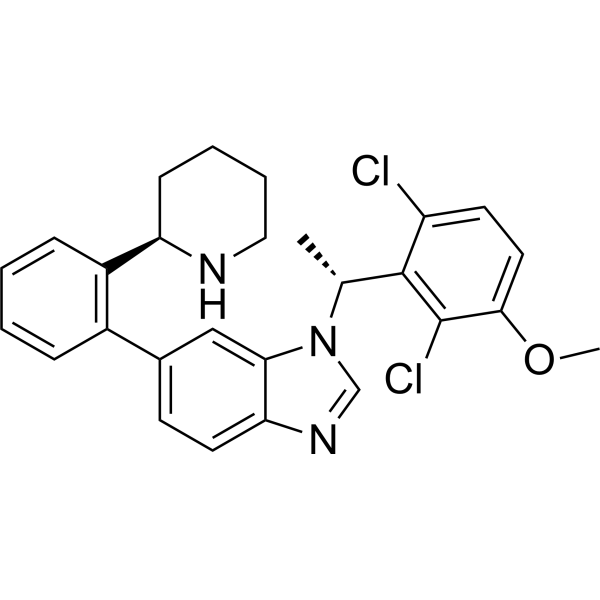
-
- HY-B1619
-
|
Cromoglicic acid
|
Others
|
Inflammation/Immunology
|
|
Cromolyn is a mast cell stabilizer. Cromolyn has the potential for the research of bronchial asthma, allergic rhinitis, and certain allergic eye conditions such as vernal conjunctivitis, keratitis, and keratoconjunctivitis .
|
-
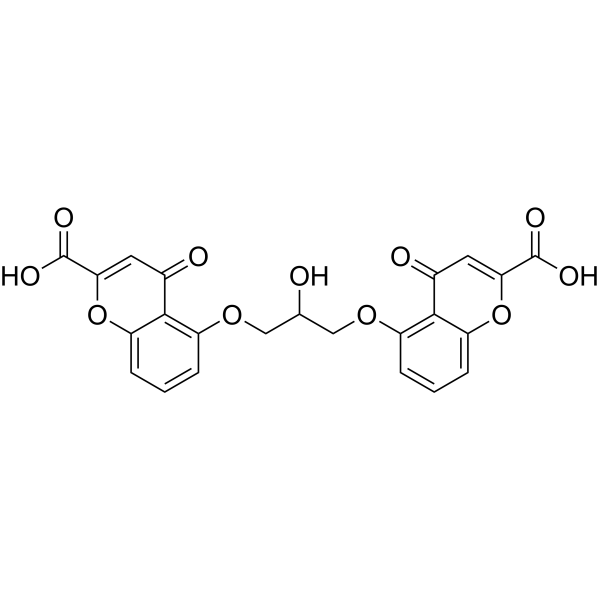
-
- HY-N7059
-
|
|
Bacterial
|
Infection
|
|
Lactobionic acid is a bionic acid naturally found in the Caspian Sea yogurt and chemically constituted of a gluconic acid bonded to a galactose. Lactobionic acid has antioxidant, antimicrobial, chelating, stabilizer, acidulant, and moisturizing properties .
|
-

-
- HY-149513
-
|
|
c-Myc
Apoptosis
|
Cancer
|
|
EP12 is a c-Myc inhibitor. EP12 is a c-Myc G4 stabilizer. EP12 induces apoptosis and DNA damage in multiple myeloma cells. EP12 disrupts the nuclear translocation of P65/P50 by interfering with the NF-κB signaling pathway. EP12 inhibits multiple myeloma growth .
|
-

-
- HY-108468
-
|
|
Cryptochrome
|
Metabolic Disease
|
|
KL001 is a first-in-class cryptochrome (CRY, a flavoproteins that are sensitive to blue light, and is involved in the circadian rhythms of plants and animals) stabilizer which specifically interacts with CRY1 and CRY2. KL001 prevents ubiquitin-dependent degradation of CRY, resulting in lengthening of the circadian period. KL001 has the potential to control fasting hormone-induced gluconeogenesis .
|
-

-
- HY-W250308
-
|
Epsilon-polylysine; ε-Polylysine; ε-PL
|
Bacterial
|
Others
|
|
Epsilon-polylysine is an antimicrobial peptide that can be produced by bacteria such as Streptomyces. Epsilon-polylysine inhibits the growth of microorganisms such as bacteria, yeasts and molds and is therefore often used as a green food additive and preservative in various food and beverage products. Epsilon-polylysine has a variety of properties, including thermal stability, resistance to acidic conditions, and broad-spectrum antimicrobial activity. Epsilon-polylysine can be loaded on other materials to form nanoparticles or form nanofiber membranes for targeted delivery to exert sustained antibacterial efficacy. Epsilon-polylysine is also used as a liposome stabilizer .
|
-
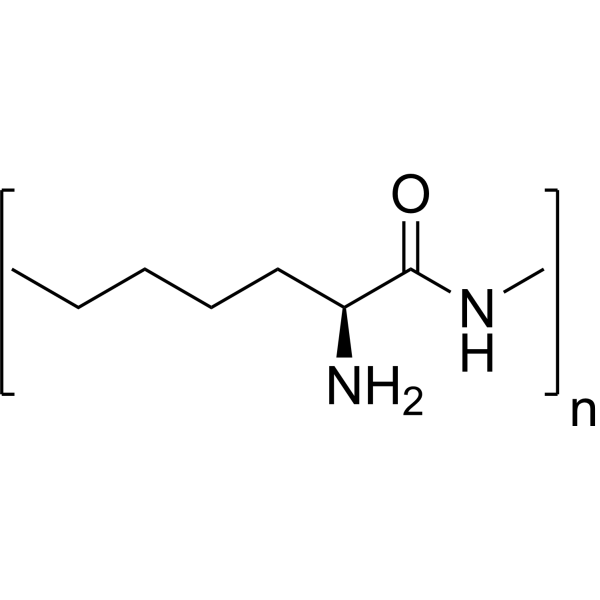
-
- HY-W094474
-
|
hydrate/monohydrateortrihydrate
|
GSK-3
Apoptosis
|
Infection
Neurological Disease
|
|
Lithium chloride hydrate, an orally active mood stabilizer, is a potent virus inhibitor and effective immunomodulatory agent. Lithium chloride hydrate has antidepressant activity by inhibiting GSK3β and promoting neurogenesis. Lithium chloride hydrate alleviates cognition dysfunction and the symptoms of acute mania and depression. Lithium chloride hydrate can also be used for research of virus infection and Alzheimer's disease .
|
-
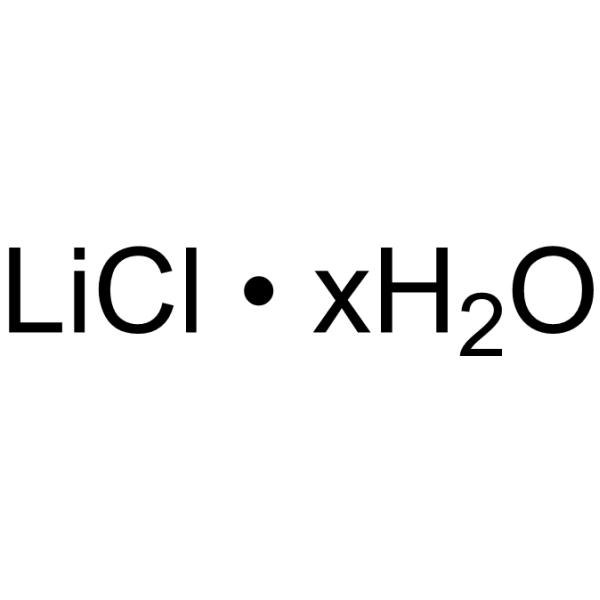
-
- HY-122815
-
|
Fusicoccin A
|
Apoptosis
|
Cancer
|
|
Fusicoccin (Fusicoccin A), a fungal pytotoxin, is a stabilizer of specific 14-3-3 protein-protein interactions. Fusicoccin sabilizes H +-ATPase/14-3-3 cmplex in pants, maintaining the enzyme in activated state. Fusicoccin also stabilizes 14-3-3 protein interactions with binding partners containing a C-terminal 14-3-3 recognition motif (a mode 3 motif), such as ERα, GPIbα, TASK3, CTFR, and p53. Fusicoccin induces apoptosis in cancer cells and has anticancer activity .
|
-

-
- HY-15278
-
-
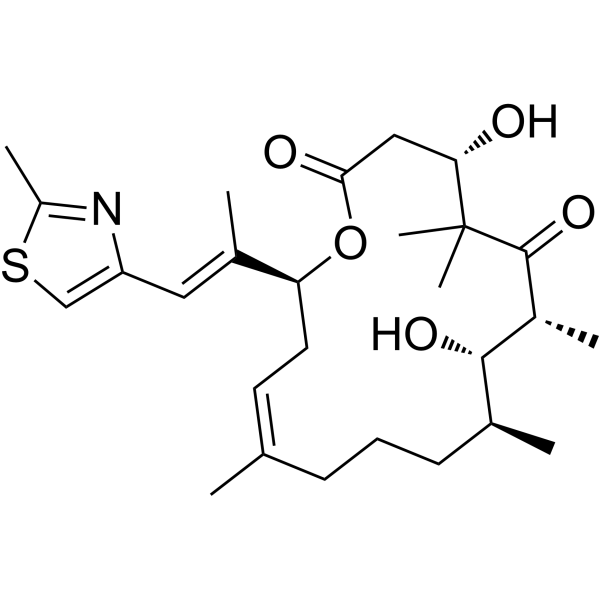
-
- HY-N11067
-
|
|
Apoptosis
|
Cancer
|
|
Taccalonolide E is a microtubule stabilizer and induces cancer cell apoptosis.
|
-
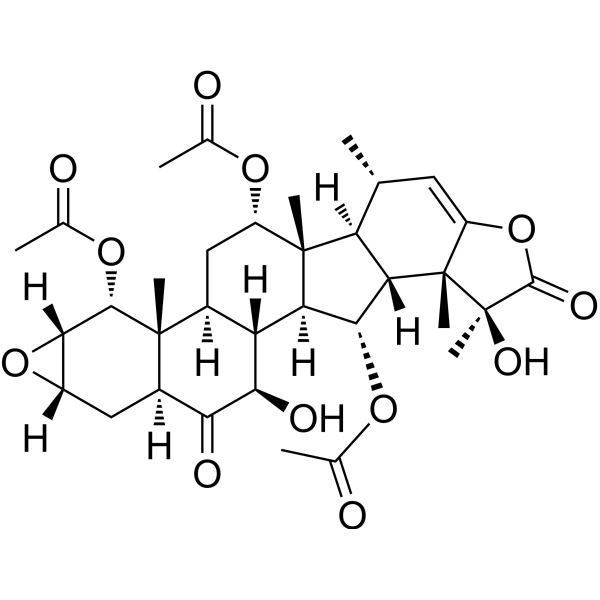
-
- HY-145937
-
|
|
MDM-2/p53
|
Cancer
|
|
PK9327 is a small-molecule stabilizer targeting cavity-creating p53 cancer mutations.
|
-
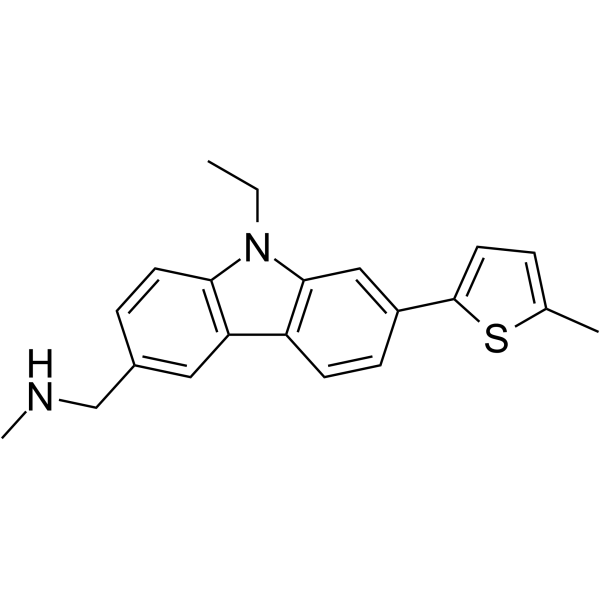
-
- HY-B0538A
-
-
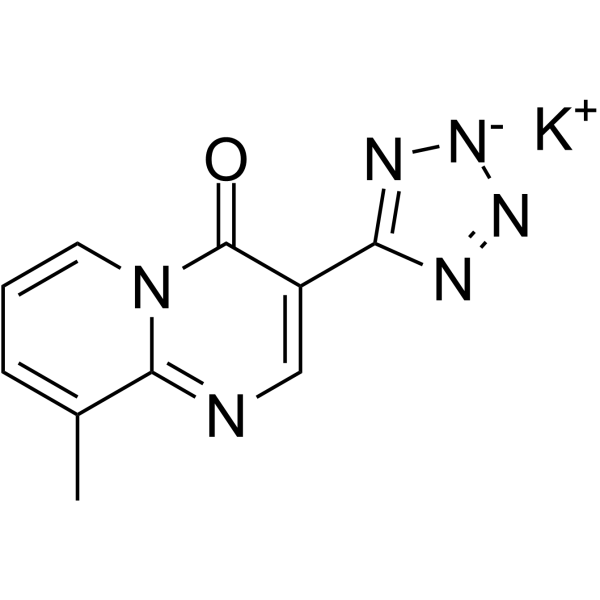
-
- HY-135776
-
|
o-BMVC
|
G-quadruplex
|
Cancer
|
|
BMVC2 (o-BMVC) is a bisubstitute carbazole derivative of BMVC. BMVC2 is a G-quadruplex (G4) stabilizer .
|
-

-
- HY-15595
-
|
|
G-quadruplex
Telomerase
|
Cancer
|
|
360A is a selective stabilizer of G-quadruplex, and also inhibits telomerase activity with an IC50 of 300 nM for telomerase in TRAP-G4 assay.
|
-

-
- HY-14270
-
-
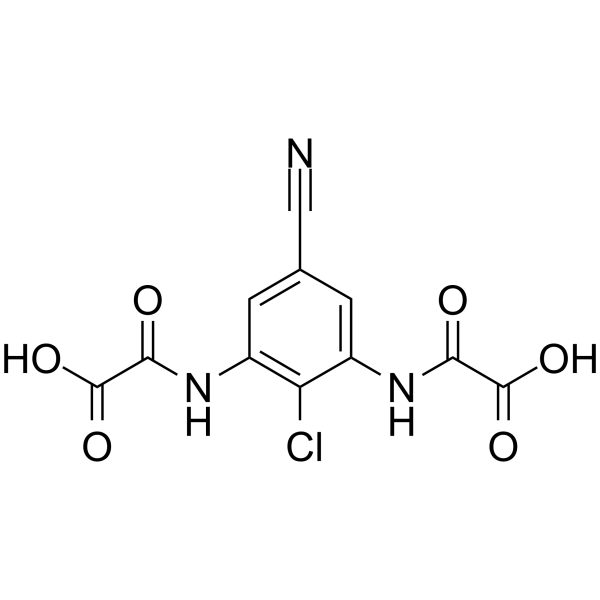
-
- HY-138694
-
|
|
Antibiotic
|
Infection
|
|
5-Benzyloxygramine is a N protein PPI orthosteric stabilizer that exhibits both antiviral and N-NTD protein-stabilizing activities .
|
-
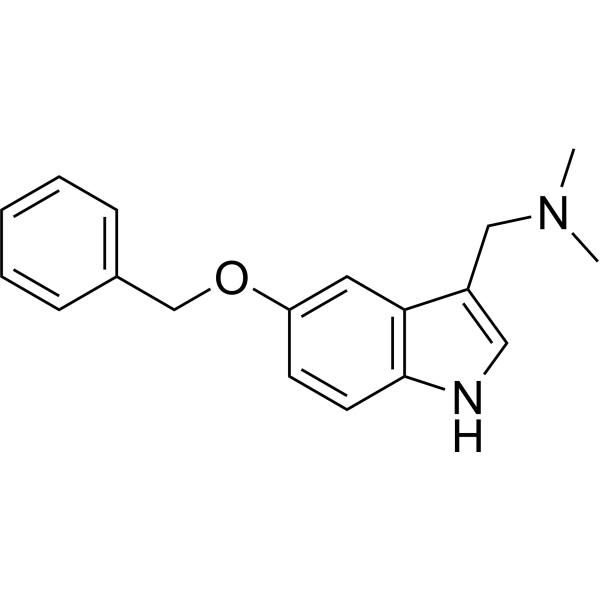
-
- HY-15595A
-
|
360 A iodide
|
G-quadruplex
Telomerase
|
Cancer
|
|
360A iodide is a selective stabilizer of G-quadruplex, and also inhibits telomerase activity with an IC50 of 300 nM for telomerase in TRAP-G4 assay.
|
-
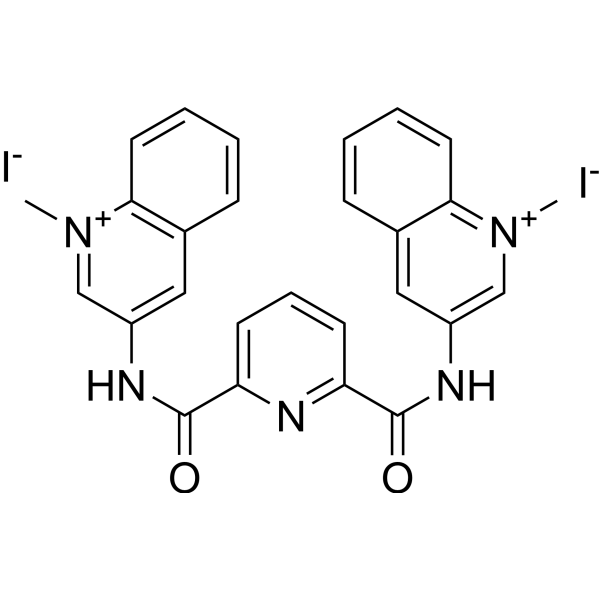
-
- HY-126899
-
|
|
Microtubule/Tubulin
|
Cancer
|
|
TPI-287, a blood-brain barrier-permeable microtubule stabilizer, can significantly reduce metastatic colonization of breast cancer in the brain .
|
-

-
- HY-17029
-
-
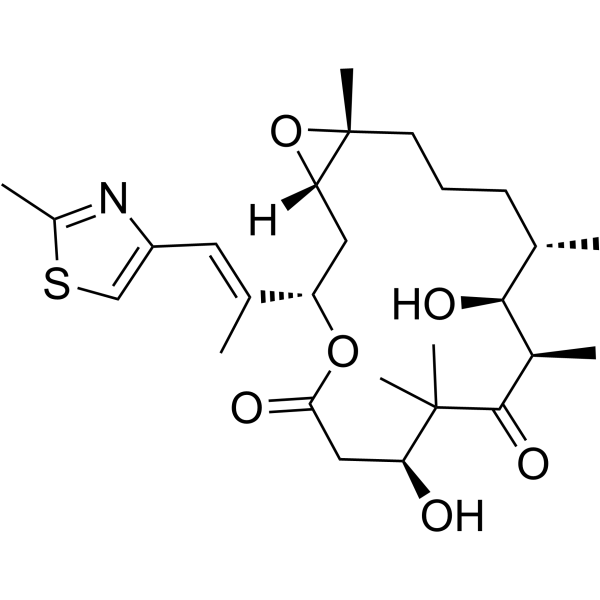
-
- HY-15278A
-
|
(16R)-KOS 862
|
Others
|
Infection
Cancer
|
|
(16R)-Epothilone D is the isomer of Epothilone D (HY-15278), and can be used as an experimental control. Epothilone D (KOS 862) is a potent microtubule stabilizer.
|
-
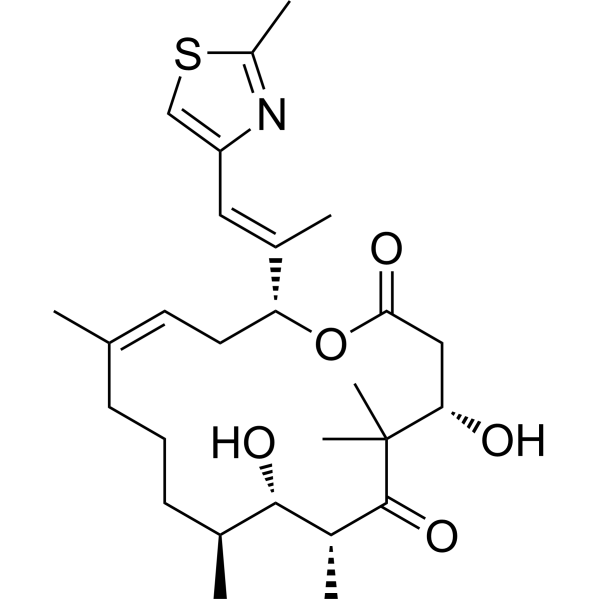
-
- HY-119506
-
|
|
Cryptochrome
|
Metabolic Disease
|
|
KL044, a stabilizer of the clock protein cryptochrome (CRY) , is a potent chemical probe with a pEC50 value of 7.32, leading to the extension of the circadian period and repression of Per2 activity .
|
-
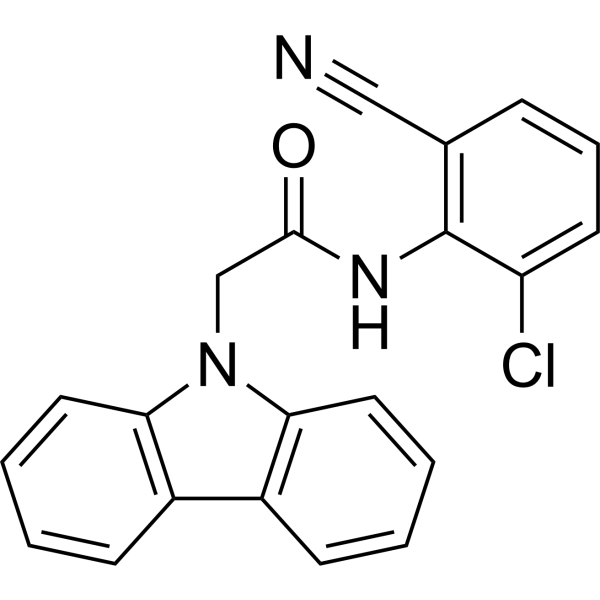
-
- HY-109165
-
-
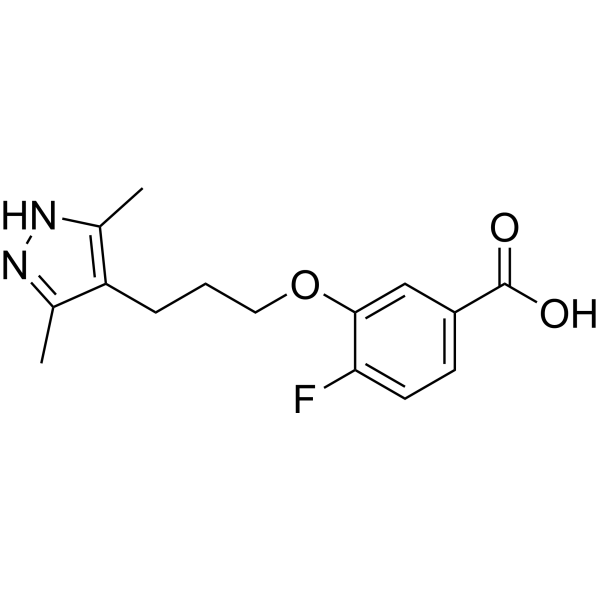
-
- HY-109165A
-
|
AG10 hydrochloride
|
Transthyretin (TTR)
|
Metabolic Disease
Endocrinology
|
|
Acoramidis (AG10) hydrochloride is an orally active and selective kinetic stabilizer of WT and V122I-TTR (transthyretin). Acoramidis (AG10) hydrochloride is used in the study for transthyretin amyloidosis .
|
-
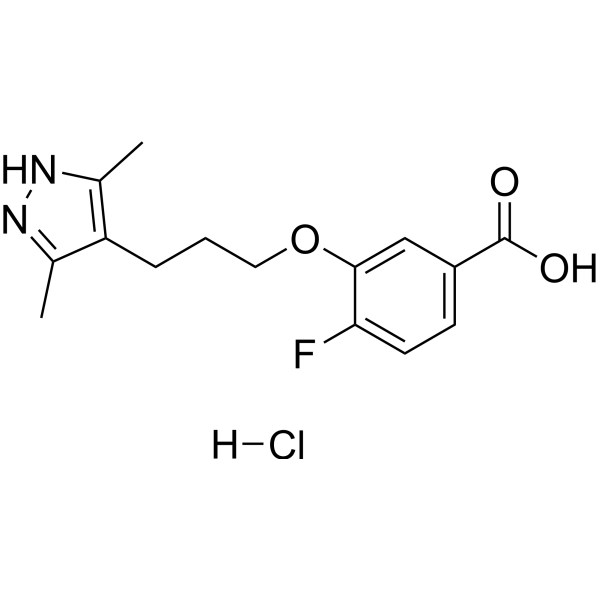
-
- HY-B1068
-
|
Triton WR1339
|
Biochemical Assay Reagents
|
Metabolic Disease
|
|
Tyloxapol (Triton WR1339) is a nonionic liquid polymer of the alkyl aryl polyether alcohol type, used as a surface active stabilizer. Tyloxapol (Triton WR1339) is used to induce hyperlipidemia in animals .
|
-

-
- HY-16967
-
|
|
|
|
|
MM41 is a potent stabilizer of human telomeric and gene promoter DNA quadruplexes. MM41 is potently against the MIA PaCa-2 pancreatic cancer cell line with IC50 value of <10 nM .
|
-
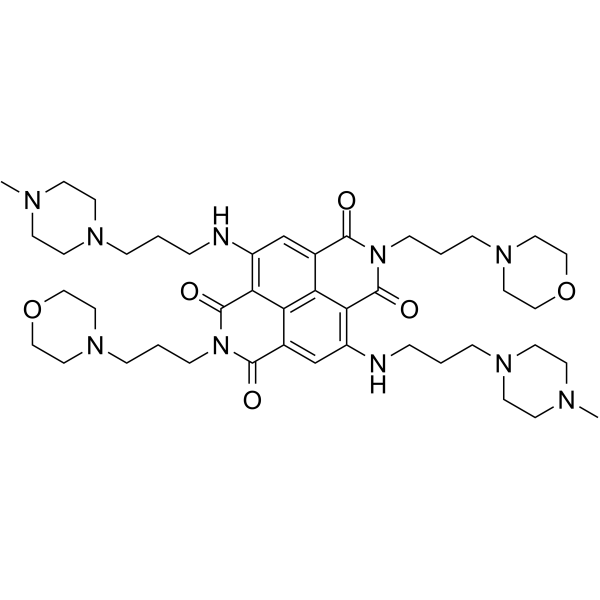
-
- HY-134194
-
KL201
1 Publications Verification
|
Cryptochrome
|
Metabolic Disease
|
|
KL201 a circadian clock modulator, is a isoform-selective cryptochrome 1 (CRY1) stabilizer. KL201 has no stabilizing effect on CRY2. KL201 lengthens the period of circadian rhythms in cells and tissues .
|
-
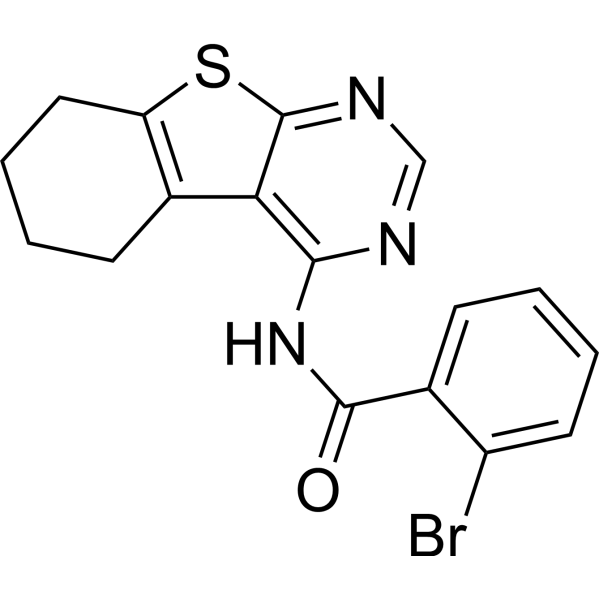
-
- HY-W414069
-
|
|
Endogenous Metabolite
Liposome
|
Others
|
|
Thiocholesterol is a member of the class of cholesteric liquid crystals (CLCs) that can be used to synthesis cationic lipid. Thiocholesterol is a stronger stabilizer of silver nanoparticles (SNPs). Thiocholesterol can be used for plasma membrane research and drug delivery .
|
-

-
- HY-156228
-
|
|
Others
|
Cancer
|
|
RGB-1 is a polycyclic aromatic hydrocarbon molecule and a stabilizer of RNA G-quadruplexes. RGB-1 can promote the inhibition of RNA translation and reduce the expression of NRAS proto-oncogene in breast cancer cells .
|
-

-
- HY-B0157AS
-
-
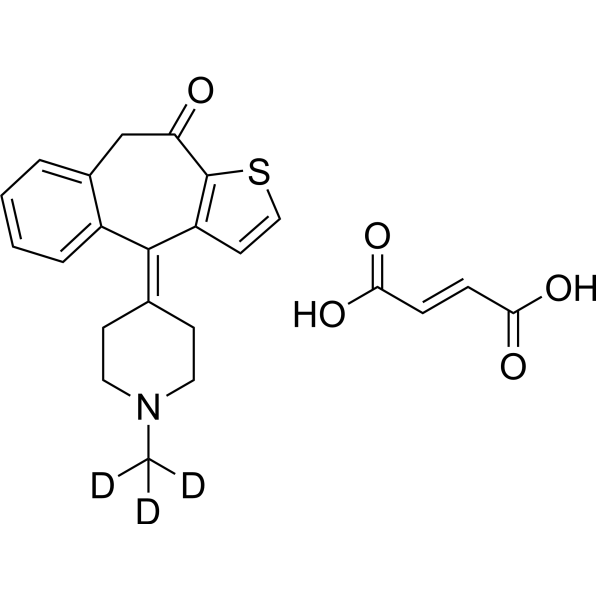
-
- HY-148953
-
|
|
G-quadruplex
DNA/RNA Synthesis
Apoptosis
|
Cancer
|
|
MTR-106 is a potent and orally active G-quadruplex stabilizer and RNA polymerase I inhibitor. MTR-106 induces apoptosis and inhibits cell growth. MTR-106 can be used in research of cancer .
|
-
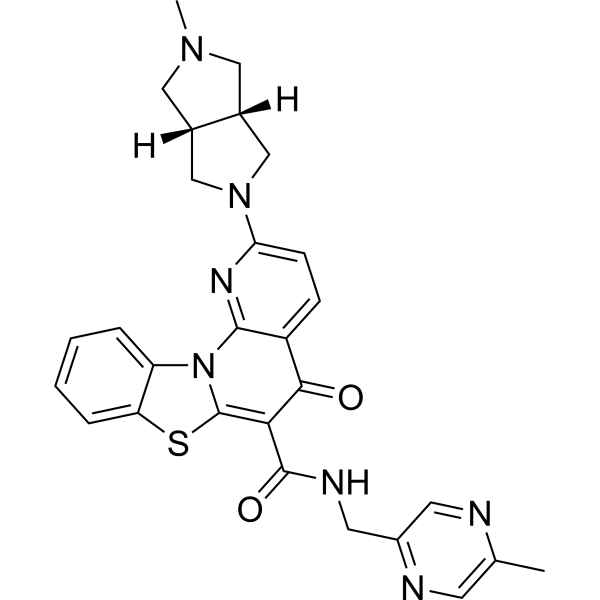
-
- HY-B0640A
-
|
WAL801 hydrochloride
|
Histamine Receptor
|
Inflammation/Immunology
Endocrinology
|
|
Epinastine hydrochloride (WAL801 hydrochloride) is an antihistamine and mast cell stabilizer. Epinastine hydrochloride is a potent, selective and orally-active histamine H1 receptor antagonist. Epinastine hydrochloride also inhibits IL-8 release and has an antiallergic action .
|
-
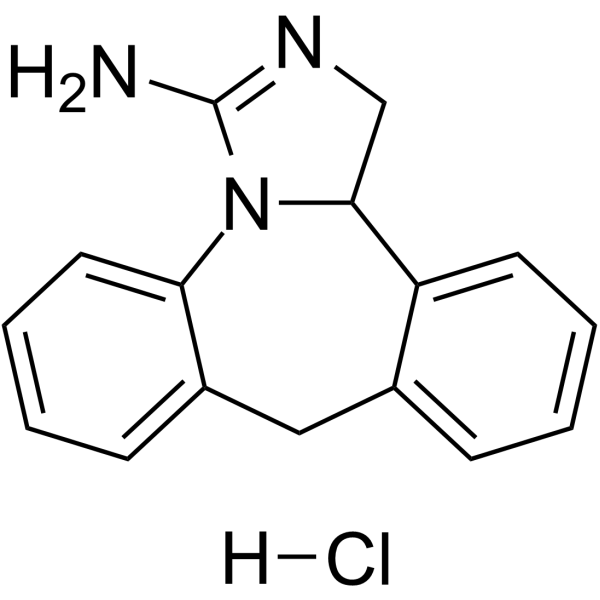
-
- HY-103403
-
|
PNU96391 hydrochloride
|
5-HT Receptor
Dopamine Receptor
|
Neurological Disease
|
|
(-)-OSU6162 (PNU96391) hydrochloride is a dopamine stabilizer. (-)-OSU6162 hydrochloride acts as partial agonist at 5-HT2A and is a dopamine D2 antagonist. (-)-OSU6162 hydrochloride can be used for the research of aggression and irritability .
|
-
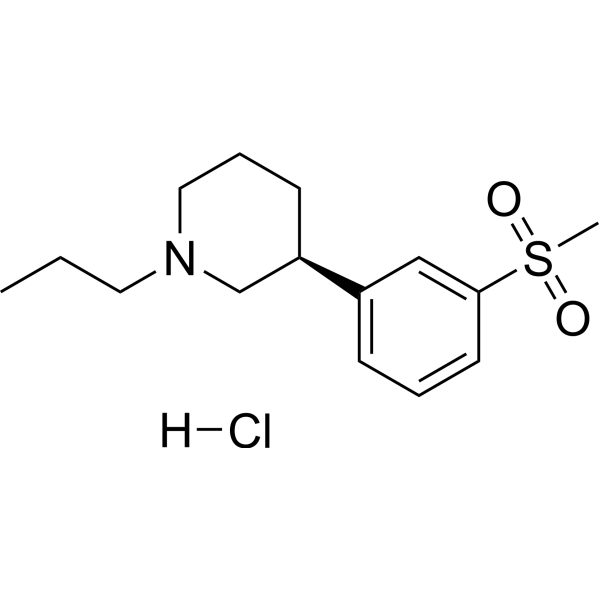
-
- HY-155647
-
|
|
Microtubule/Tubulin
|
Cancer
|
|
Microtubule stabilizing agent-1 (compound 3l) is a Paclitaxel derivative that efficiently promotes tubulin polymerization. Microtubule stabilizing agent-1 shows antitumor efficacy .
|
-
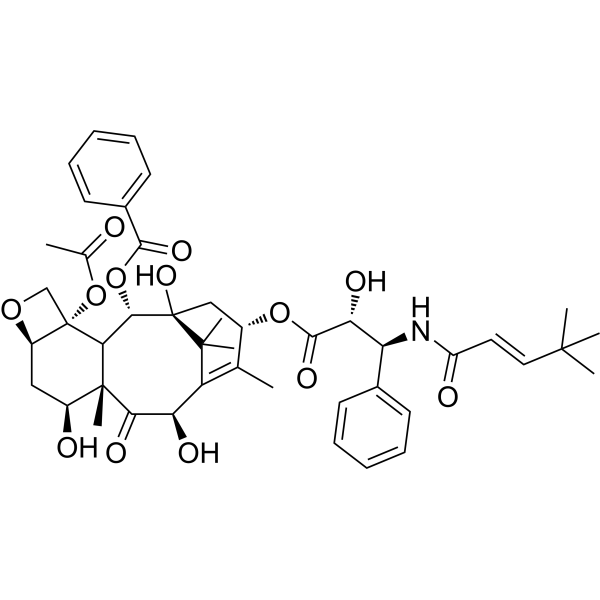
-
- HY-B0640
-
|
WAL801
|
Histamine Receptor
|
Inflammation/Immunology
Endocrinology
|
|
Epinastine (WAL801) is an antihistamine and mast cell stabilizer. Epinastine is a potent, selective and orally-active histamine H1 receptor antagonist. Epinastine also inhibits IL-8 release and has an antiallergic action .
|
-
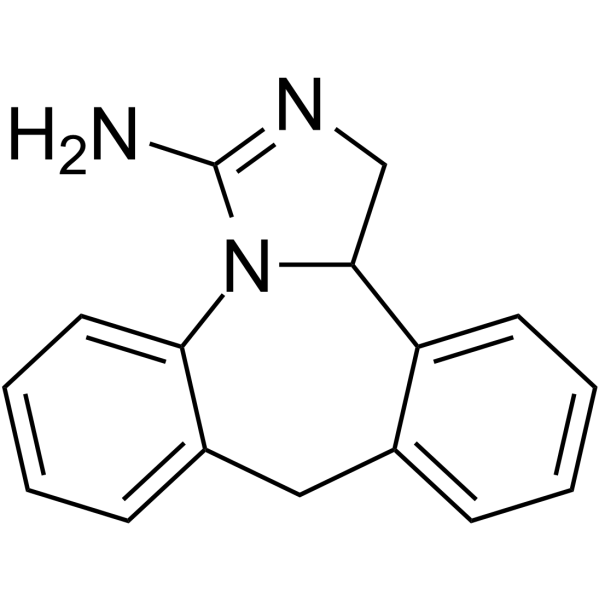
-
- HY-122295
-
|
|
Apoptosis
|
Inflammation/Immunology
Cancer
|
|
Dehydroleucodine is a sesquiterpene lactone isolated from Artemisia douglasiana. Dehydroleucodine is a mast cell stabilizer that inhibits tmast cell degranulation induced by compound 48/80. Dehydroleucodine inudces cells apoptosis, and has gastric ulcer inhibition and antileukemic effects .
|
-
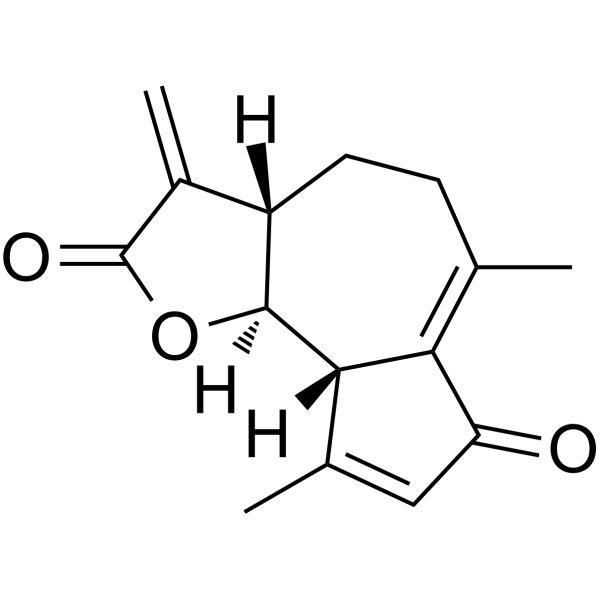
-
- HY-B1619S
-
|
Cromoglicic acid-d5
|
Isotope-Labeled Compounds
|
Inflammation/Immunology
|
|
Cromoglicic acid-d5 is the deuterium labeled Cromolyn[1]. Cromolyn is a mast cell stabilizer. Cromolyn has the potential for the research of bronchial asthma, allergic rhinitis, and certain allergic eye conditions such as vernal conjunctivitis, keratitis, and keratoconjunctivitis[2].
|
-

-
- HY-109017
-
-

-
- HY-W062109
-
|
|
Endogenous Metabolite
Histamine Receptor
|
Inflammation/Immunology
|
|
Olopatadine is an orally active and selective histamine 1 (H1) receptor antagonist and a mast cell stabilizer. Olopatadine prevents immunologically stimulated pro-inflammatory mediator release from human conjunctival mast cells. Olopatadine can be used for researching allergic conjunctivitis .
|
-
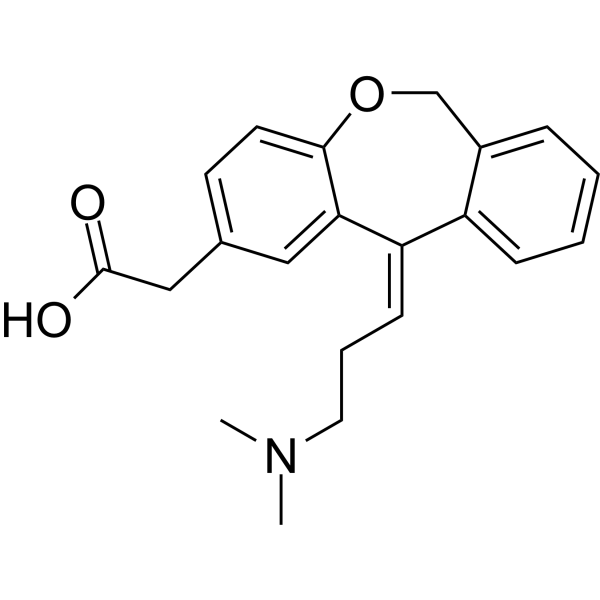
-
- HY-141543
-
|
|
β-catenin
|
Cancer
|
|
YW2065 is an Axin-1 stabilizer. Axin-1 is a scaffolding protein that regulates proteasome degradation of β-catenin. YW2065 exhibits anti-colorectal cancer effects via dual activities of wnt/β-catenin signaling inhibition and AMPK activation .
|
-
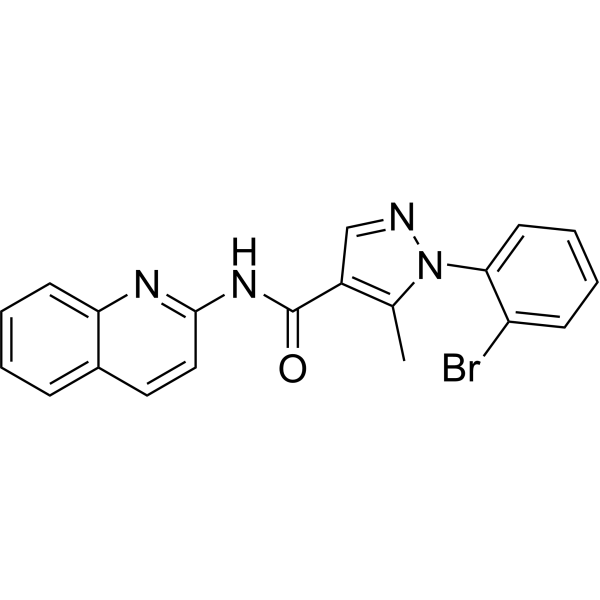
-
- HY-W093282
-
|
Soybean oil epoxide
|
Biochemical Assay Reagents
|
Others
|
|
Epoxidized soya bean oil (ESBO) is a vegetable oil-derived organic compound used as a plasticizer and stabilizer in various applications. It is produced by epoxidation of soybean oil, which introduces epoxy groups into the fatty acid chains of the oil. ESBO is a viscous, pale yellow liquid that is soluble in many organic solvents, such as chloroform and ethanol, but insoluble in water. It is commonly used as a plasticizer in polyvinyl chloride (PVC) products, including toys, food packaging materials and medical devices. In addition to its plasticizing properties, ESBO acts as an antioxidant and UV stabilizer, helping to prevent degradation and discoloration of PVC products over time. ESBOs have been investigated for their potential use in biodegradable plastics and as bio-based alternatives to traditional petroleum-derived plasticizers.
|
-
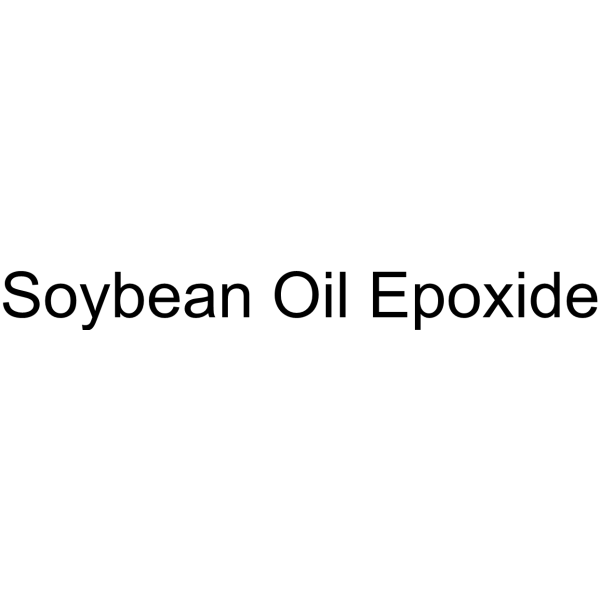
- HY-117113
-
|
|
Notch
|
Cancer
|
|
JI051 is a stabilizer for the Hes1-PHB2 interaction. JI051 interacts with a cancer-associated protein chaperone prohibitin 2 (PHB2), induces cell-cycle arrest by inhibiting the Notch downstream effector gene Hes1. Anti-cancer activity .
|
-

- HY-D0884
-
|
(S)-2-Hydroxypropanoic acid lithium
|
|
|
|
L-Lactic acid (lithium) is a chemical compound belonging to the class of lithium salts. It is commonly used in the pharmaceutical industry as a mood stabilizer and antipsychotic for the improvement of bipolar disorder and schizophrenia. L-Lactic acid (lithium) works by affecting the balance of certain chemicals in the brain, which can help reduce symptoms such as mood swings, aggression, and hallucinations.
|
-
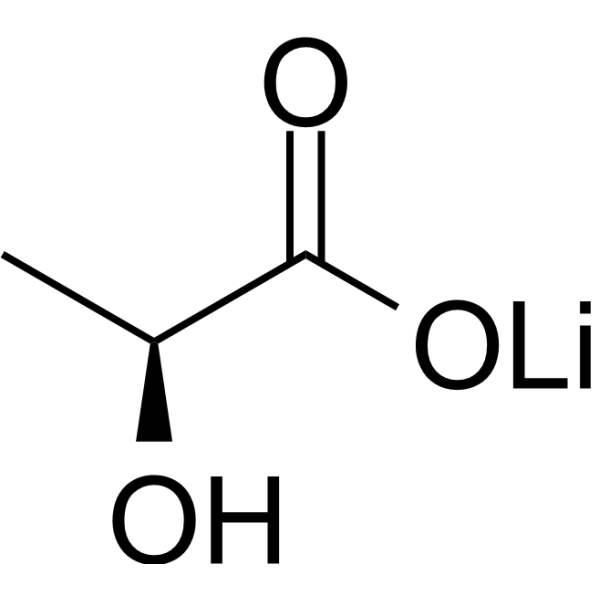
- HY-10684
-
|
ACR16; ASP2314; FR310826
|
Dopamine Receptor
|
Neurological Disease
|
|
Pridopidine, a dopamine (DA) stabilizer, acts as a low affinity dopamine D2 receptor (D2R) antagonist. Pridopidine exerts high affinity towards sigma 1 receptor (S1R) with Ki between 70 and 80 nM, which is ~100× higher than its affinity toward D2R.
|
-
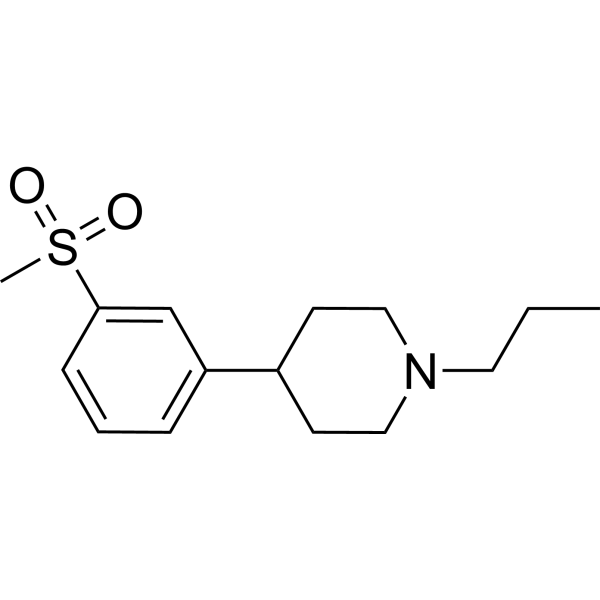
- HY-135775
-
BMVC
1 Publications Verification
|
G-quadruplex
Telomerase
DNA/RNA Synthesis
|
Cancer
|
|
BMVC is a potent G-quadruplex (G4) stabilizer and a selective telomerase inhibitor with an IC50 of ~0.2 μM. BMVC inhibits Taq DNA polymerase with an IC50 of ~2.5 μM. BMVC increases the melting temperature of G4 structure of telomere and accelerates telomere length shortening. Anticancer activities .
|
-
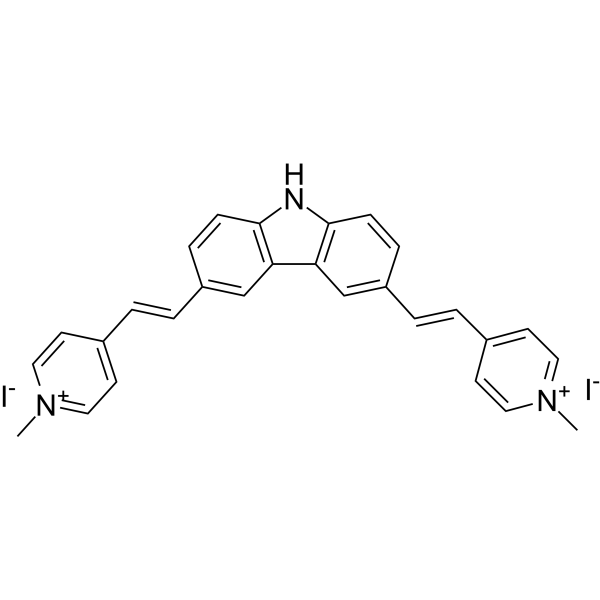
- HY-N3028
-
|
|
Microtubule/Tubulin
|
Cancer
|
|
Taccalonolide B is microtubule stabilizer isolated from Tacca plantaginea, with antitumor activity. Taccalonolide B is effective in vitro against cell lines that overexpress P-glycoprotein (Pgp) and multidrug-resistance protein (MRP7). Taccalonolide B inhibits growth of SK-OV-3 cells with an IC50 of 208 nM .
|
-
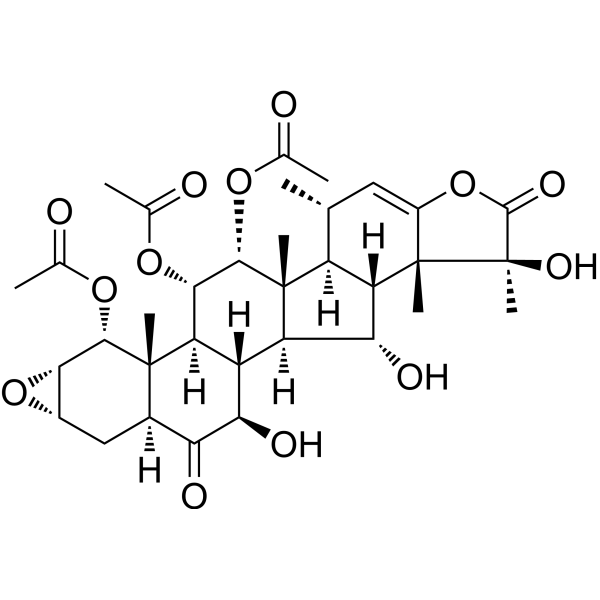
- HY-14852
-
|
|
Transthyretin (TTR)
|
Neurological Disease
|
|
Tafamidis is a potent and selective transthyretin (TTR) stabilizer, shows comparable potency and efficacy to the mutumant homotetramers V30M-TTR, V122I-TTR and wild type WT-TTR, with EC50s of 2.7-3.2 μM. Tafamidis inhibits amyloidogenesis .
|
-

- HY-113649
-
|
|
HIF/HIF Prolyl-Hydroxylase
|
Cancer
|
|
AKB-6899, a prolyl hydroxylase domain 3 (PHD3) inhibitor, is a selective HIF-2α stabilizer. AKB-6899 also increases soluble form of the VEGF receptor (sVEGFR-1) production from GM-CSF-treated macrophages, and has antitumor and antiangiogenic effects .
|
-
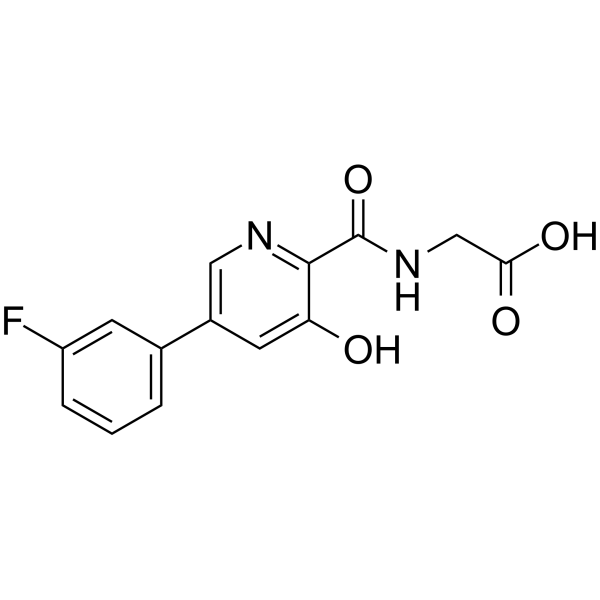
- HY-W115731
-
|
|
Biochemical Assay Reagents
Endogenous Metabolite
|
Others
|
|
Dextrins are a group of low molecular weight carbohydrates produced by the hydrolysis of starch. Dextrin is commonly used as a thickener, stabilizer or binder in a variety of foods including baked goods, beverages and confectionary. In addition, it is used in the production of adhesives, paper and textiles. Its unique chemical properties make it an important ingredient in a variety of industrial processes, especially in construction and packaging.
|
-
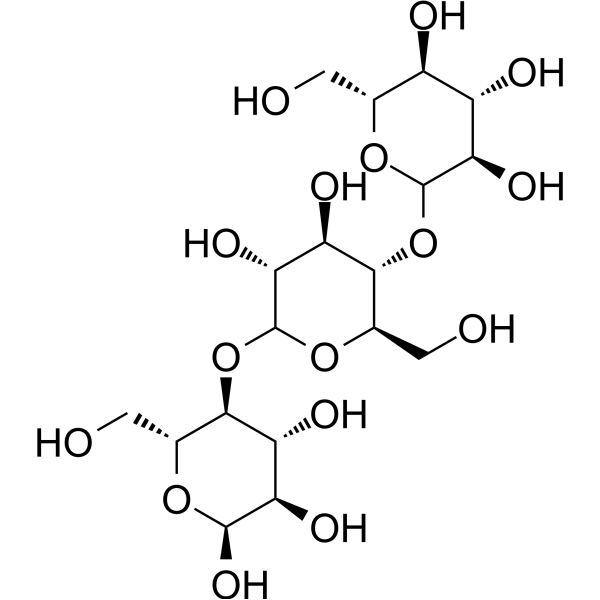
- HY-B0640AR
-
|
WAL801 hydrochloride (Standard)
|
Histamine Receptor
|
Inflammation/Immunology
Endocrinology
|
|
Epinastine (hydrochloride) (Standard) is the analytical standard of Epinastine (hydrochloride). This product is intended for research and analytical applications. Epinastine hydrochloride (WAL801 hydrochloride) is an antihistamine and mast cell stabilizer. Epinastine hydrochloride is a potent, selective and orally-active histamine H1 receptor antagonist. Epinastine hydrochloride also inhibits IL-8 release and has an antiallergic action .
|
-
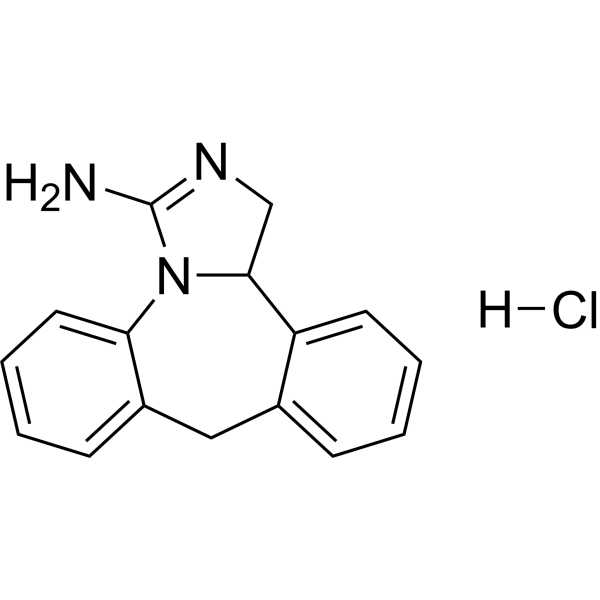
- HY-124484
-
|
|
Notch
|
Cancer
|
|
JI130 (JI051 derivative?) is a stabilizer for the?Hes1-PHB2?interaction. JI130 inhibits?the ability of Hes1 to repress transcription. JI130?significantly reduces the tumor growth in a murine pancreatic tumor model and has the potential for ?managing pancreatic cancer .
|
-
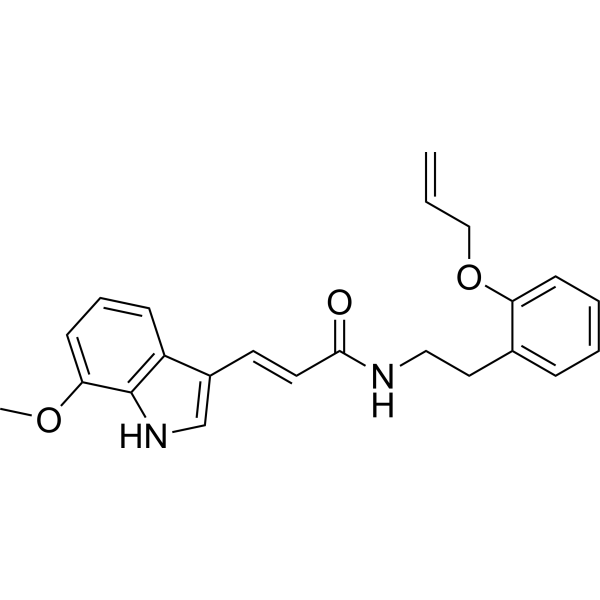
- HY-P2902
-
|
|
Endogenous Metabolite
|
Cancer
|
|
Glucose oxidase is used in the food and beverage industry as a preservative and stabilizer and is commonly derived from the fungus Aspergillus niger. Glucose oxidase can react with intracellular glucose and oxygen (O2) to produce hydrogen peroxide (H2O2) and gluconic acid, which can cut off the nutrition source of cancer cells and consequently inhibit their proliferation .
|
-
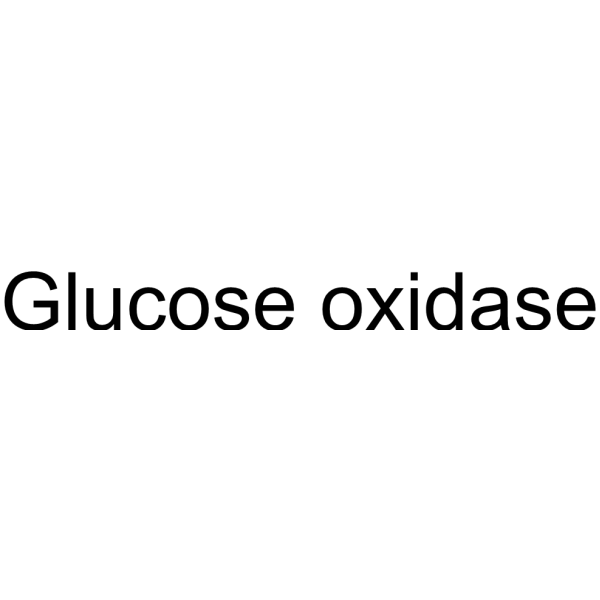
- HY-B0640S
-
|
WAL801-13C,d3 hydrobromide
|
Isotope-Labeled Compounds
Histamine Receptor
|
Inflammation/Immunology
Endocrinology
|
|
Epinastine- 13C,d3 (hydrobromide) is the 13C- and deuterium labeled Epinastine. Epinastine (WAL801) is an antihistamine and mast cell stabilizer. Epinastine is a potent, selective and orally-active histamine H1 receptor antagonist. Epinastine also inhibits IL-8 release and has an antiallergic action[1][2][3][4].
|
-

- HY-B2225B
-
|
Edible corn starch (from corn)
|
Biochemical Assay Reagents
Endogenous Metabolite
|
Others
|
|
Starch (from corn) is a carbohydrate extracted from the kernel of the corn plant. It contains two main components, namely amylose and amylopectin. Starches from corn have various applications in the food industry as thickeners, stabilizers and binders. It is commonly used in the production of products such as baked goods, snacks, sauces and soups. In addition, it can be used as a raw material for the production of biofuels and bioplastics.
|
-
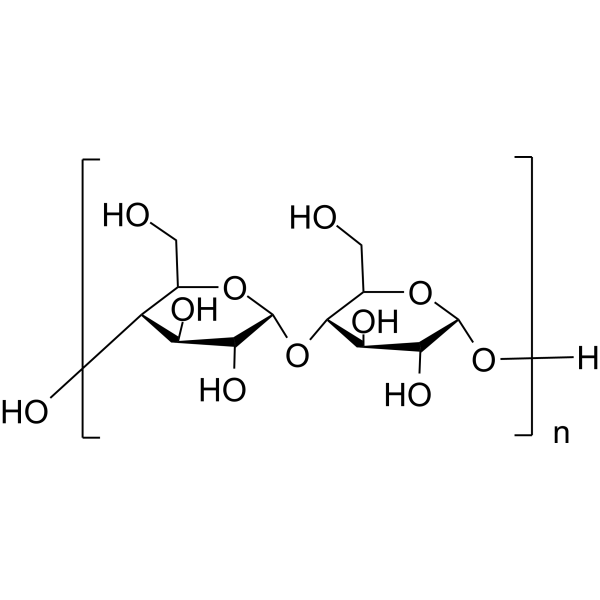
- HY-W062109S
-
|
|
Histamine Receptor
Endogenous Metabolite
|
Inflammation/Immunology
|
|
Olopatadine-d6 is the deuterium labeled Olopatadine[1]. Olopatadine is an orally active and selective histamine 1 (H1) receptor antagonist and a mast cell stabilizer. Olopatadine prevents immunologically stimulated pro-inflammatory mediator release from human conjunctival mast cells. Olopatadine can be used for researching allergic conjunctivitis[2][3].
|
-
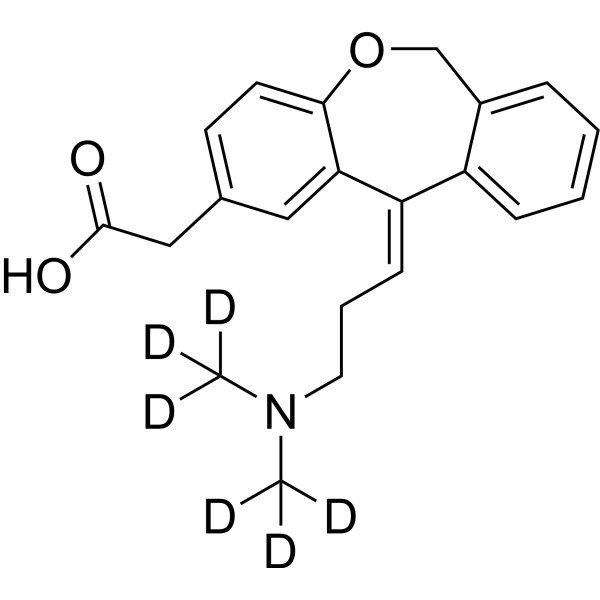
- HY-156106
-
|
|
PROTACs
Ligands for E3 Ligase
HIF/HIF Prolyl-Hydroxylase
|
Cancer
|
|
VHL-IN-1 (compound 30) is a ubiquitin E3 ligase von Hippel-Lindau (VHL) inhibitor (dissociation constant Kd=37 nM) that stabilizes and induces HIF-1α transcriptional activity. VHL-IN-1 has potential as a HIF-1α stabilizer and degrader of proteolytically targeted chimeras (PROTACs) .
|
-
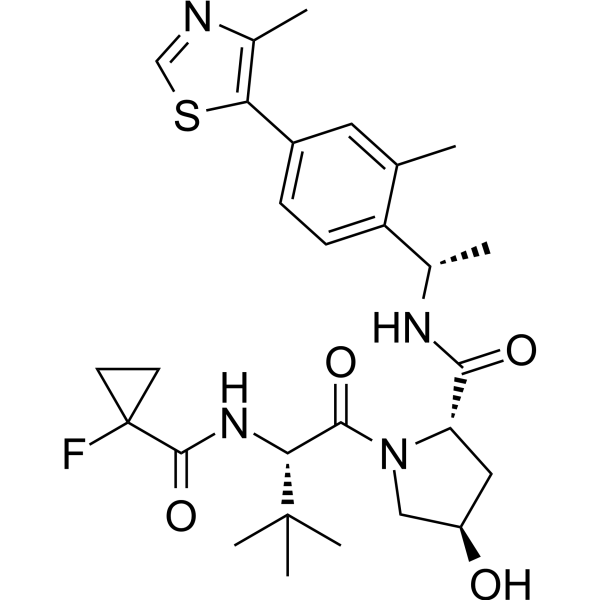
- HY-14852A
-
|
Fx-1006A
|
Transthyretin (TTR)
|
Neurological Disease
|
|
Tafamidis meglumine (Fx-1006A) is a potent and selective transthyretin (TTR) stabilizer, shows comparable potency and efficacy to the mutumant homotetramers V30M-TTR, V122I-TTR and wild type WT-TTR, with EC50s of 2.7-3.2 μM. Tafamidis meglumine inhibits amyloidogenesis .
|
-
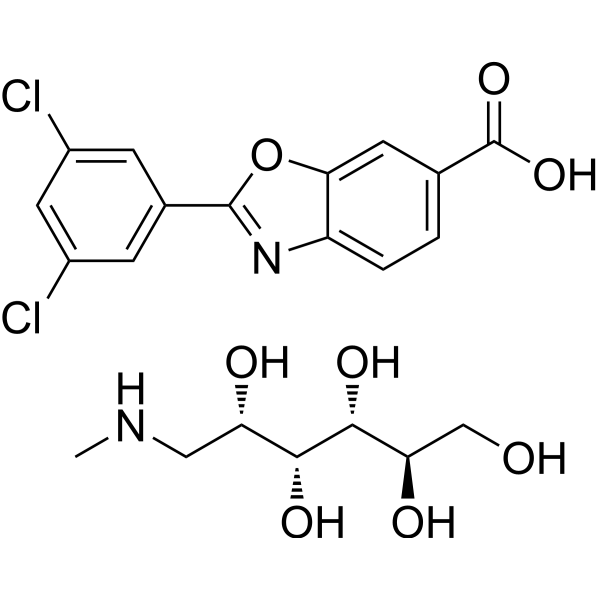
- HY-12542
-
Dantrolene
Maximum Cited Publications
7 Publications Verification
F 368
|
Calcium Channel
Autophagy
|
Neurological Disease
Inflammation/Immunology
|
|
Dantrolene is an orally active, non-competitive glutathione reductase inhibitor with a Ki of 111.6 μM and an IC50 of 52.3 μM. Dantrolene is a ryanodine receptor (RyR) antagonist and Ca2+ signaling stabilizer. Dantrolene is a direct-acting skeletal muscle relaxant. Dantrolene can be used for the research of muscle spasticity, malignant hyperthermia, Huntington's disease and other neuroleptic malignant syndrome .
|
-
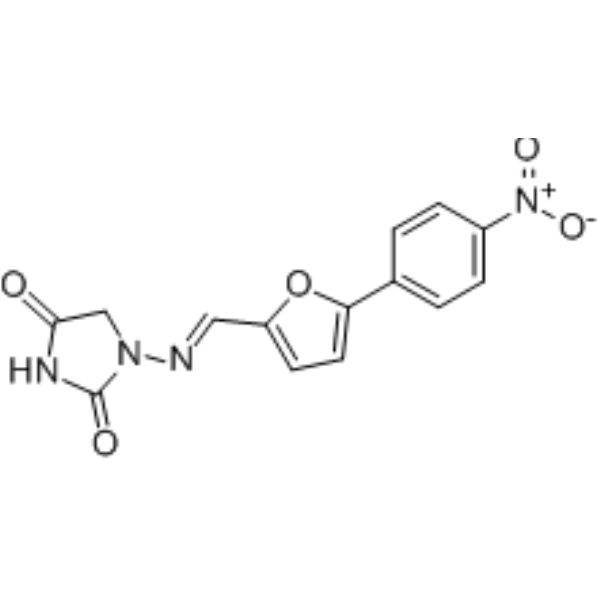
- HY-145998
-
|
m8Gm
|
Others
|
Others
|
|
2′-O-Methyl-8-methyl guanosine (m8Gm) is a Z-form RNA stabilizer. 2′-O-Methyl-8-methyl guanosine can markedly stabilize the Z-RNA at low salt conditions . m8Gm-contained oligonucleotides stabilize
the Z-DNA under low salt conditions .
|
-
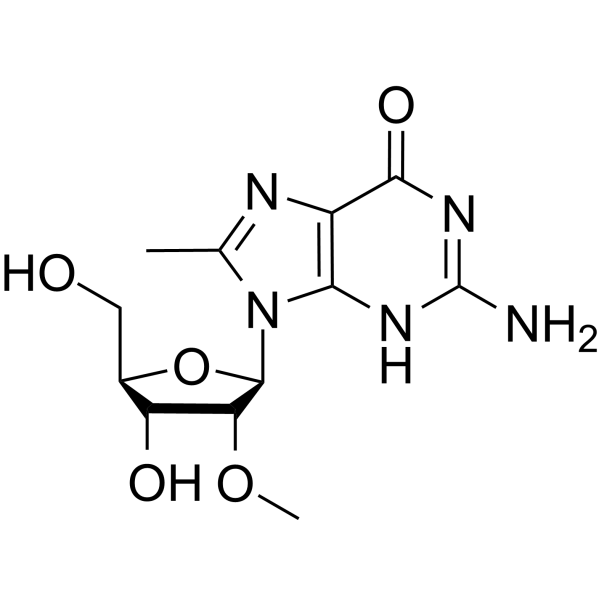
- HY-W100404
-
|
|
Biochemical Assay Reagents
|
Others
|
|
Tetramethylammonium p-toluenesulfonate is a quaternary ammonium compound belonging to the class of alkylammonium salts. This compound is widely used as a phase transfer catalyst in organic synthesis to facilitate the transfer of reactants between immiscible phases. Furthermore, it can be used as a surfactant, emulsifier or stabilizer in various industrial applications. Its unique chemical properties make it an important ingredient in the production of pharmaceuticals, agrochemicals and materials science products.
|
-
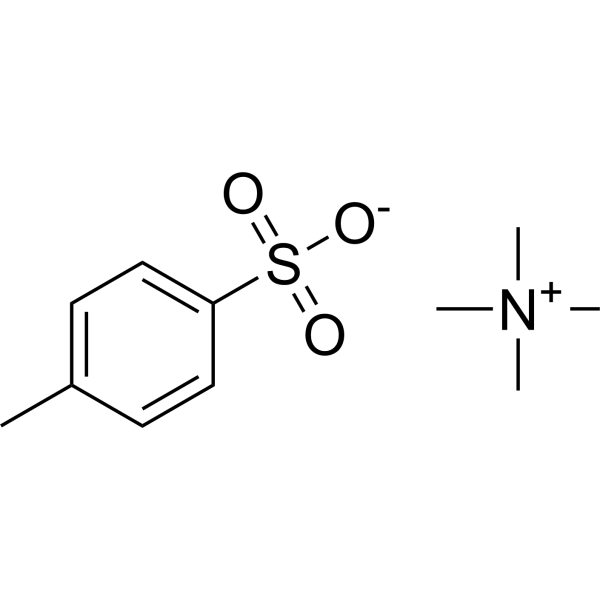
- HY-160689
-
|
UNC10112731
|
c-Myc
c-Kit
Discoidin Domain Receptor
PDGFR
|
Others
|
|
GW694590A (UNC10112731) is a MYC protein stabilizer that increases endogenous MYC protein levels. GW694590A also targets receptor tyrosine kinases, inhibiting DDR2, KIT and PDGFRα by 81% at 1 μM. , 68% and 67%. GW694590A is a protein kinase inhibitor across ATP-dependent and -independent luciferases with potential effects on the Fluc reporter gene .
|
-

- HY-108477
-
|
TMP 1363
|
G-quadruplex
Telomerase
Cholinesterase (ChE)
SARS-CoV
|
Cancer
|
|
TMPyP4 tosylate (TMP 1363) is a quadruplex-specific ligand. TMPyP4 tosylate inhibits the interaction between G-quadruplexes and IGF-1. TMPyP4 tosylate is a telomerase inhibitor and inhibits cancer cells proliferation. TMPyP4 tosylate is also a stabilizer of nucleic acid secondary structure and an acetylcholinesterase inhibitor. Besides, TMPyP4 tosylate has antiviral activity against SARS-CoV-2 .
|
-
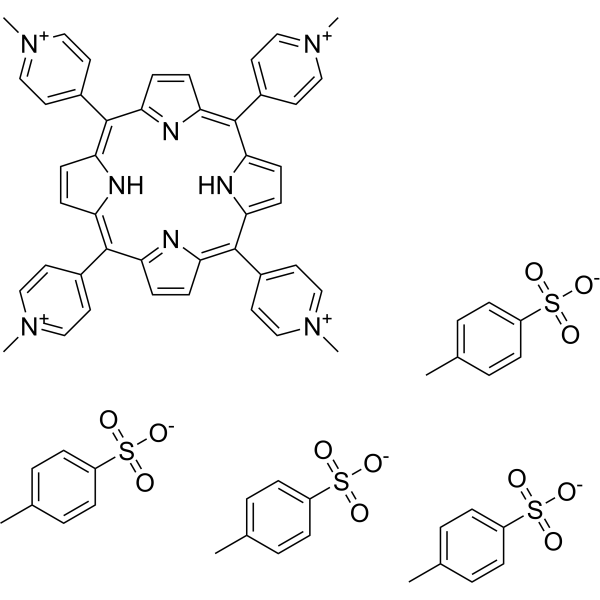
- HY-14852S
-
|
|
Transthyretin (TTR)
Isotope-Labeled Compounds
|
Neurological Disease
|
|
Tafamidis-d3 is deuterium labeled Tafamidis. Tafamidis is a potent and selective transthyretin (TTR) stabilizer, shows comparable potency and efficacy to the mutumant homotetramers V30M-TTR, V122I-TTR and wild type WT-TTR, with EC50s of 2.7-3.2 μM. Tafamidis inhibits amyloidogenesis[1].
|
-
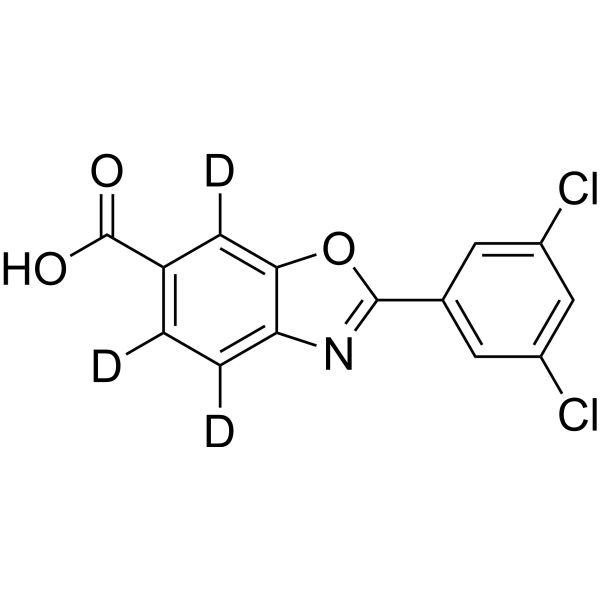
- HY-W004293
-
|
Tridecyl Alcohol
|
Biochemical Assay Reagents
|
Others
|
|
1-Tridecanol is an organic compound commonly used as a surfactant, lubricant, and stabilizer, among others. It can be used in some cleaning products, preservatives and plastic additives, and can help enhance their performance and stability. In addition, the compound is used in some industrial fields, for example in the manufacture of products such as cellulose and paints. Although the compound has no direct medical application, it plays an important role in consumer products and industrial production.
|
-
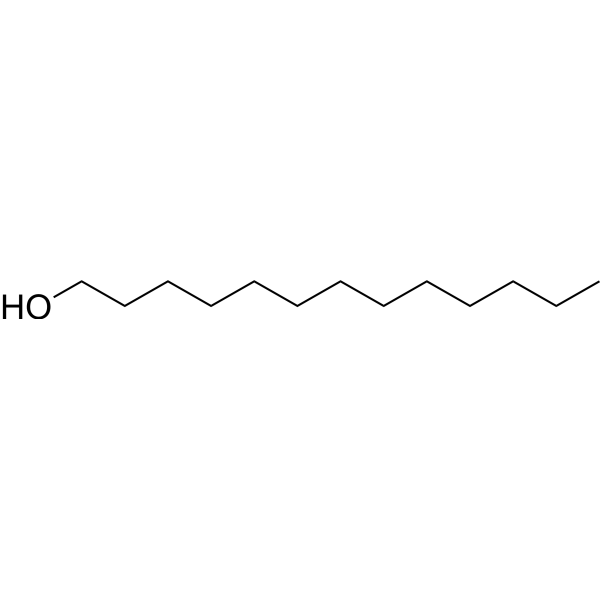
- HY-12542A
-
|
Dantrolene sodium hydrate
|
Calcium Channel
Autophagy
|
Others
|
|
Dantrolene sodium hemiheptahydrate is an orally active, non-competitive glutathione reductase inhibitor with a Ki of 111.6 μM and an IC50 of 52.3 μM. Dantrolene sodium hemiheptahydrate is a ryanodine receptor (RyR) antagonist and Ca2+ signaling stabilizer. Dantrolene sodium hemiheptahydrate is a direct-acting skeletal muscle relaxant. Dantrolene sodium hemiheptahydrate can be used for the research of muscle spasticity, malignant hyperthermia, Huntington's disease and other neuroleptic malignant syndrome .
|
-
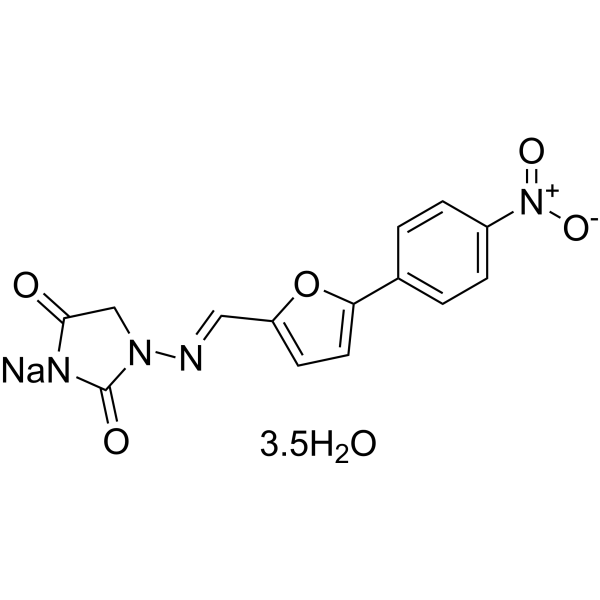
- HY-120373
-
|
|
MDM-2/p53
|
Cancer
|
|
MB710, an aminobenzothiazole derivative, is a stabilizer of oncogenic p53 mutation Y220C. MB710 binds tightly to the Y220C pocket and stabilizes p53-Y220C, with a Kd of 4.1 μM. MB710 shows anticancer activity in p53-Y220C cell lines .
|
-

- HY-12542S
-
|
F 368-13C3
|
Isotope-Labeled Compounds
Glutathione Reductase
|
Neurological Disease
Inflammation/Immunology
|
|
Dantrolene- 13C3 is the 13C3 labeled Dantrolene. Dantrolene (F368), a muscle relaxant, non-competitively inhibits human erythrocyte glutathione reductase. Ki and IC50 values are 111.6 μM and 52.3 μM, respectively. Dantrolene is a ryanodine receptor antagonist and Ca2+ signaling stabilizer. Dantrolene can be used for the research of muscle spasticity, malignant hyperthermia, Huntington's disease and other neuroleptic malignant syndrome.
|
-

- HY-115415
-
|
|
Liposome
|
Others
|
|
1,2-Distearoyl-sn-glycero-3-phosphate, sodium salt is a phospholipid commonly used as a component of liposome formulations and drug delivery systems. 1,2-Distearoyl-sn-glycero-3-phosphate, sodium salt has unique chemical properties that make it an effective tool for encapsulating drugs and delivering them to specific targets in the body. It acts as a stabilizer and emulsifier, which can improve the solubility and bioavailability of drugs.
|
-
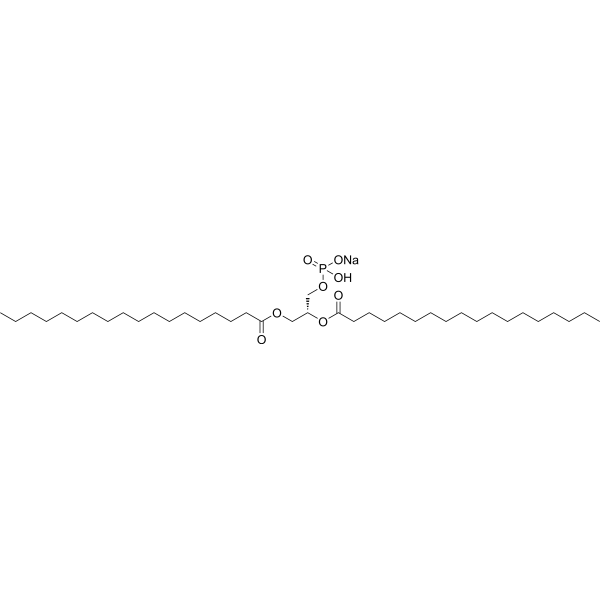
- HY-B0157A
-
|
HC 20511 fumarate
|
Histamine Receptor
Endogenous Metabolite
SARS-CoV
Influenza Virus
|
Inflammation/Immunology
Endocrinology
Cancer
|
|
Ketotifen (HC 20-511) fumarate is an orally active second-generation noncompetitive histamine 1 (H1) receptor blocker and mast cell stabilizer. Ketotifen fumarate can block 6-phosphogluconate dehydrogenase (PGD) in vitro. Ketotifen fumarate also has antiviral activity against SARS-CoV-2 and Influenza virus. Ketotifen fumarate can be used to the research of autoimmune encephalomyelitis (EAE) and asthma attack prevention .
|
-
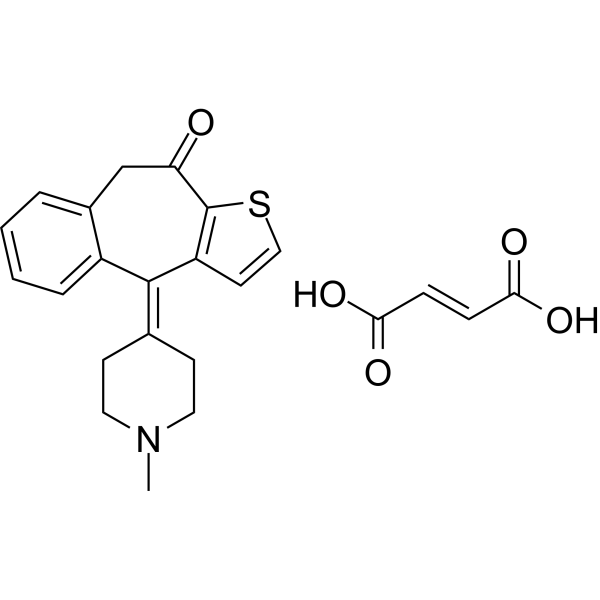
- HY-N2416
-
|
|
Microtubule/Tubulin
Apoptosis
|
Cancer
|
|
Taccalonolide A is a microtubule stabilizer, which is a steroid isolated from Tacca chantrieri, with cytotoxic and antimalarial activities . Taccalonolide A causes G2-M accumulation, Bcl-2 phosphorylation and initiation of apoptosis . Taccalonolide A is effective in vitro against cell lines that overexpress P-glycoprotein (Pgp) and multidrug resistance protein 7 (MRP7), with an IC50 of 622 nM for SK-OV-3 cells .
|
-
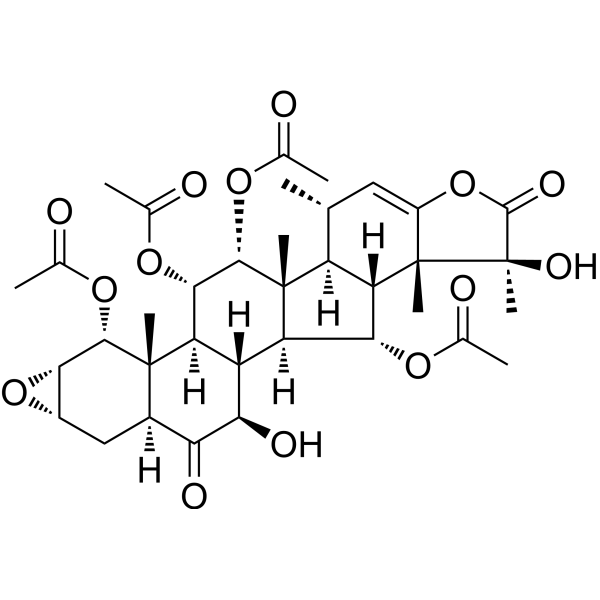
- HY-B0157
-
|
HC 20-511
|
|
|
|
Ketotifen (HC 20-511) is an orally active second-generation noncompetitive histamine 1 (H1) receptor blocker and mast cell stabilizer. Ketotifen can block 6-phosphogluconate dehydrogenase (PGD) in vitro. Ketotifen also has antiviral activity against SARS-CoV-2 and Influenza virus. Ketotifen can be used to the research of autoimmune encephalomyelitis (EAE) and asthma attack prevention .
|
-

- HY-112624B
-
|
|
Biochemical Assay Reagents
|
Others
|
|
Dextran (MW 70000) is a complex carbohydrate polymer consisting of glucose molecules linked by glycosidic bonds. Dextran has excellent solubility in water, making it useful as a viscosity modifier or stabilizer in foods, paints and adhesives. In the biomedical field, dextran is often used as a plasma expander because of its ability to increase blood volume when administered intravenously. It can also be modified to create dextran-based drug delivery systems, such as targeted nanoparticles.
|
-
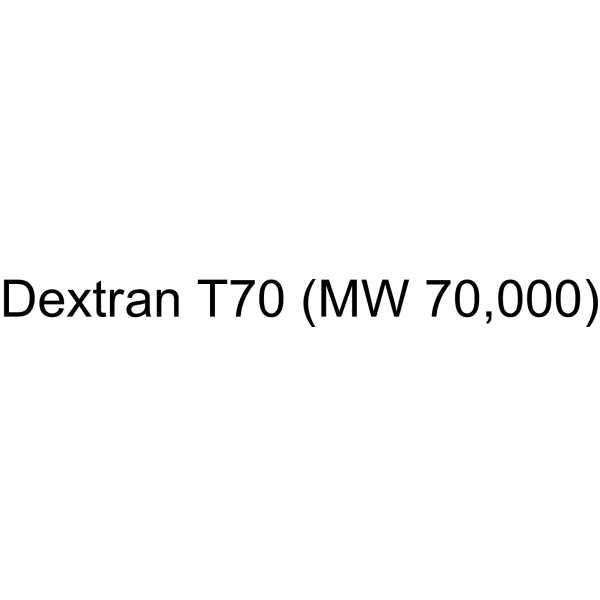
- HY-112624C
-
|
|
Biochemical Assay Reagents
Endogenous Metabolite
|
Others
|
|
Dextran (MW 40000) is a complex carbohydrate polymer consisting of glucose molecules linked by glycosidic bonds. Dextran has excellent solubility in water, making it useful as a viscosity modifier or stabilizer in foods, paints and adhesives. In the biomedical field, dextran is often used as a plasma expander because of its ability to increase blood volume when administered intravenously. It can also be modified to create dextran-based drug delivery systems, such as targeted nanoparticles.
|
-
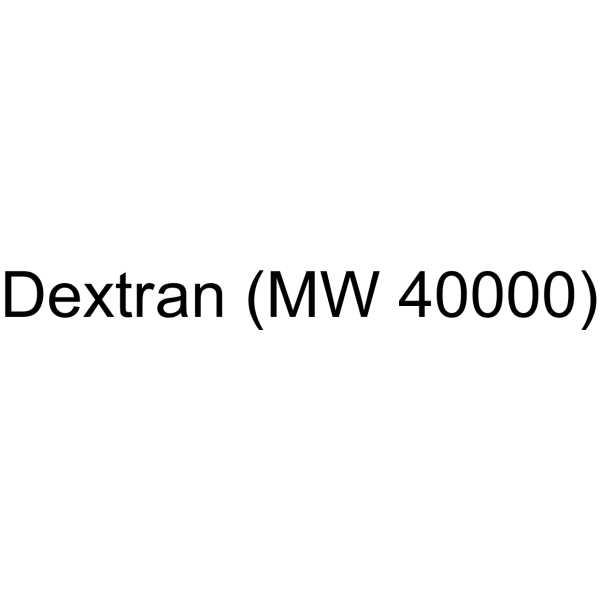
- HY-125619
-
|
|
Liposome
|
Others
|
|
1,2-dioctanoyl-sn-glycero-3-phosphocholine, is a phospholipid commonly used as a component of liposome formulations and drug delivery systems. 1,2-dioctanoyl-sn-glycero-3-phosphocholine has unique chemical properties that allow it to form stable bilayers and vesicles, allowing drug encapsulation and delivery to specific targets in the body. It acts as a stabilizer and emulsifier, which can improve the solubility and bioavailability of drugs.
|
-
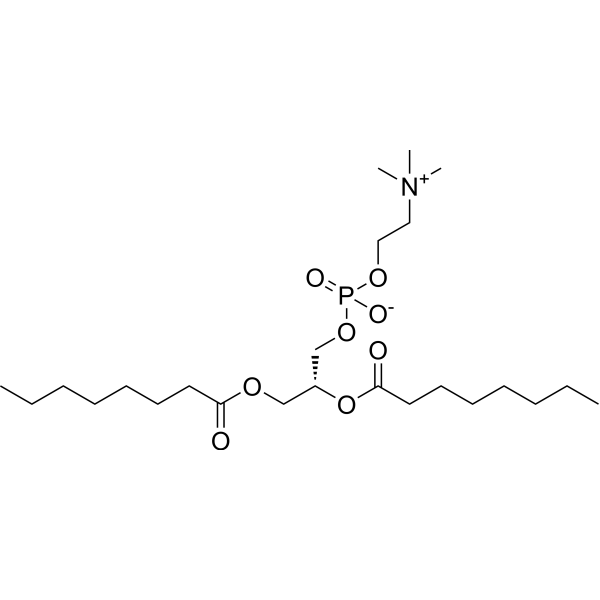
- HY-W250309
-
|
|
Biochemical Assay Reagents
|
Others
|
|
Pentaerythritol tetra(3-mercaptopropionate)It is a class of organic compounds containing both pentaerythritol and mercaptopropionate groups. It is commonly used as a stabilizer and crosslinking agent in various chemical and industrial applications. Pentaerythritol tetra(3-mercaptopropionate)Has a variety of properties that make it suitable for these applications, including the ability to increase the mechanical strength, thermal stability and weatherability of polymers and coatings. Additionally, it can be used as a feedstock for the production of other specialty chemicals and materials.
|
-
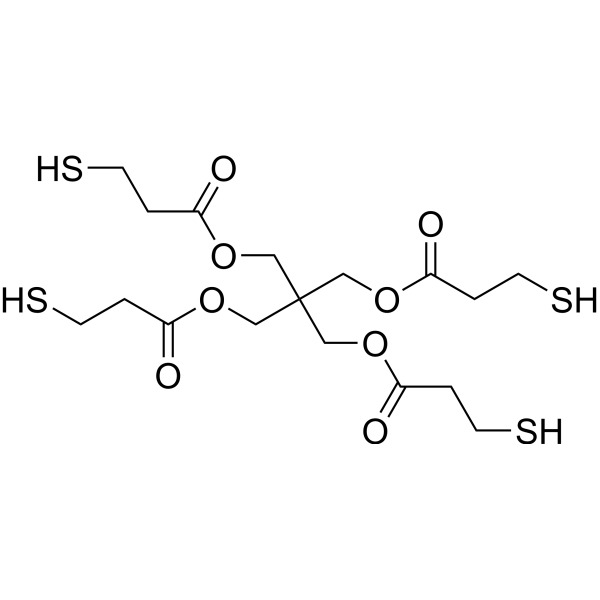
- HY-106481
-
|
|
GPR35
Histamine Receptor
|
Inflammation/Immunology
|
|
Bufrolin is a Cromoglycate (histamine release inhibitor) analog and a high potency agonist of GPR35. Bufrolin promotes interactions between β-arrestin-2 and either human GPR35a or rat GPR35. Bufrolin also serves as antiallergic mast cell stabilizer and inhibit an anti-inflammatory response inducible by the internalization peptide. Bufrolin acts as an anti-inflammatory agent to be used in research of delivering pharmacol linked with internalization peptide .
|
-
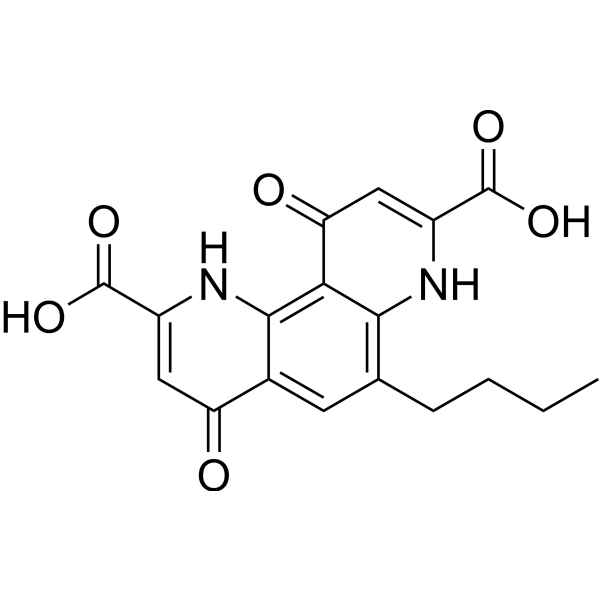
- HY-A0103
-
|
|
|
|
|
Xanthan gum is a microbial polysaccharide produced by Xanthomonas campestris. The structure of xanthan gum is based on a cellulose backbone of β-(1-4)-linked glucose units with a trisaccharide side of mannose-glucuronic acid-mannose attached to every other glucose unit in the backbone chain. Some terminal mannose units are pyruvated and some internal mannose units are acetylated. Due to its unique rheology and gelling properties, it is widely used as a food additive, thickener and stabilizer in the food and petroleum industries.
|
-

- HY-154703
-
|
|
Biochemical Assay Reagents
|
Others
|
|
Aluminum magnesium silicate can be used as an excipient, such as adsorbent, stabilizer, suspending agent, disintegrant for tablet and capsule, binder for tablet, thickener. Pharmaceutical excipients, or pharmaceutical auxiliaries, refer to other chemical substances used in the pharmaceutical process other than pharmaceutical ingredients. Pharmaceutical excipients generally refer to inactive ingredients in pharmaceutical preparations, which can improve the stability, solubility and processability of pharmaceutical preparations. Pharmaceutical excipients also affect the absorption, distribution, metabolism, and elimination (ADME) processes of co-administered drugs .
|
-
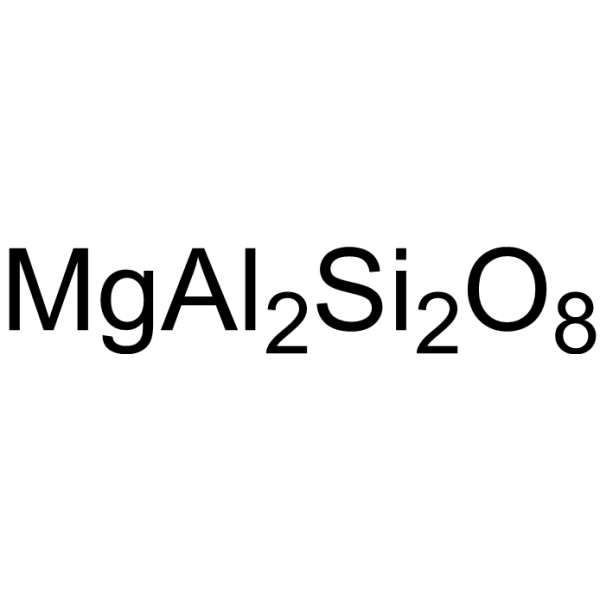
- HY-W010572
-
|
alpha-Thioglycerol
|
Biochemical Assay Reagents
|
Others
|
|
1-Thioglycerol, commonly used as a reducing agent in various biochemical and biophysical applications, especially in protein chemistry and molecular biology, it can protect proteins from oxidation and denaturation, and can reduce disulfide bonds to thiols base, which can then be modified or analyzed. In addition, 1-Thioglycerol has been investigated for potential medical applications, including as an inhibitor of cystic fibrosis, which may help improve the function of lung cells, and has also been studied for Used in the preparation of metal nanoparticles and as a stabilizer for certain pharmaceutical preparations.
|
-

| Cat. No. |
Product Name |
Type |
-
- HY-W250308
-
|
Epsilon-polylysine; ε-Polylysine; ε-PL
|
Biochemical Assay Reagents
|
|
Epsilon-polylysine is an antimicrobial peptide that can be produced by bacteria such as Streptomyces. Epsilon-polylysine inhibits the growth of microorganisms such as bacteria, yeasts and molds and is therefore often used as a green food additive and preservative in various food and beverage products. Epsilon-polylysine has a variety of properties, including thermal stability, resistance to acidic conditions, and broad-spectrum antimicrobial activity. Epsilon-polylysine can be loaded on other materials to form nanoparticles or form nanofiber membranes for targeted delivery to exert sustained antibacterial efficacy. Epsilon-polylysine is also used as a liposome stabilizer .
|
-
- HY-W093282
-
|
Soybean oil epoxide
|
Biochemical Assay Reagents
|
|
Epoxidized soya bean oil (ESBO) is a vegetable oil-derived organic compound used as a plasticizer and stabilizer in various applications. It is produced by epoxidation of soybean oil, which introduces epoxy groups into the fatty acid chains of the oil. ESBO is a viscous, pale yellow liquid that is soluble in many organic solvents, such as chloroform and ethanol, but insoluble in water. It is commonly used as a plasticizer in polyvinyl chloride (PVC) products, including toys, food packaging materials and medical devices. In addition to its plasticizing properties, ESBO acts as an antioxidant and UV stabilizer, helping to prevent degradation and discoloration of PVC products over time. ESBOs have been investigated for their potential use in biodegradable plastics and as bio-based alternatives to traditional petroleum-derived plasticizers.
|
-
- HY-W115731
-
|
|
Biochemical Assay Reagents
|
|
Dextrins are a group of low molecular weight carbohydrates produced by the hydrolysis of starch. Dextrin is commonly used as a thickener, stabilizer or binder in a variety of foods including baked goods, beverages and confectionary. In addition, it is used in the production of adhesives, paper and textiles. Its unique chemical properties make it an important ingredient in a variety of industrial processes, especially in construction and packaging.
|
-
- HY-W011060
-
|
4,7,13,16,21,24-Hexaoxa-1,10-diazabicyclo[8.8.8]hexacosane
|
Biochemical Assay Reagents
|
|
Cryptand 2.2.2 is a metal ion chelator that can be used as a reducing agent and stabilizer to prepare nanoparticles. At room temperature, Cryptand 2.2.2 can serve as a host molecule, using the chelation effect to selectively bind desired ions (such as Zn 2+, Co 2+, Ni 2+, Cu 2+) .
|
-
- HY-W414069
-
|
|
Drug Delivery
|
|
Thiocholesterol is a member of the class of cholesteric liquid crystals (CLCs) that can be used to synthesis cationic lipid. Thiocholesterol is a stronger stabilizer of silver nanoparticles (SNPs). Thiocholesterol can be used for plasma membrane research and drug delivery .
|
-
- HY-P2902
-
|
|
Biochemical Assay Reagents
|
|
Glucose oxidase is used in the food and beverage industry as a preservative and stabilizer and is commonly derived from the fungus Aspergillus niger. Glucose oxidase can react with intracellular glucose and oxygen (O2) to produce hydrogen peroxide (H2O2) and gluconic acid, which can cut off the nutrition source of cancer cells and consequently inhibit their proliferation .
|
-
- HY-B2225B
-
|
Edible corn starch (from corn)
|
Biochemical Assay Reagents
|
|
Starch (from corn) is a carbohydrate extracted from the kernel of the corn plant. It contains two main components, namely amylose and amylopectin. Starches from corn have various applications in the food industry as thickeners, stabilizers and binders. It is commonly used in the production of products such as baked goods, snacks, sauces and soups. In addition, it can be used as a raw material for the production of biofuels and bioplastics.
|
-
- HY-W100404
-
|
|
Biochemical Assay Reagents
|
|
Tetramethylammonium p-toluenesulfonate is a quaternary ammonium compound belonging to the class of alkylammonium salts. This compound is widely used as a phase transfer catalyst in organic synthesis to facilitate the transfer of reactants between immiscible phases. Furthermore, it can be used as a surfactant, emulsifier or stabilizer in various industrial applications. Its unique chemical properties make it an important ingredient in the production of pharmaceuticals, agrochemicals and materials science products.
|
-
- HY-W004293
-
|
Tridecyl Alcohol
|
Biochemical Assay Reagents
|
|
1-Tridecanol is an organic compound commonly used as a surfactant, lubricant, and stabilizer, among others. It can be used in some cleaning products, preservatives and plastic additives, and can help enhance their performance and stability. In addition, the compound is used in some industrial fields, for example in the manufacture of products such as cellulose and paints. Although the compound has no direct medical application, it plays an important role in consumer products and industrial production.
|
-
- HY-115415
-
|
|
Drug Delivery
|
|
1,2-Distearoyl-sn-glycero-3-phosphate, sodium salt is a phospholipid commonly used as a component of liposome formulations and drug delivery systems. 1,2-Distearoyl-sn-glycero-3-phosphate, sodium salt has unique chemical properties that make it an effective tool for encapsulating drugs and delivering them to specific targets in the body. It acts as a stabilizer and emulsifier, which can improve the solubility and bioavailability of drugs.
|
-
- HY-112624B
-
|
|
Drug Delivery
|
|
Dextran (MW 70000) is a complex carbohydrate polymer consisting of glucose molecules linked by glycosidic bonds. Dextran has excellent solubility in water, making it useful as a viscosity modifier or stabilizer in foods, paints and adhesives. In the biomedical field, dextran is often used as a plasma expander because of its ability to increase blood volume when administered intravenously. It can also be modified to create dextran-based drug delivery systems, such as targeted nanoparticles.
|
-
- HY-125619
-
|
|
Drug Delivery
|
|
1,2-dioctanoyl-sn-glycero-3-phosphocholine, is a phospholipid commonly used as a component of liposome formulations and drug delivery systems. 1,2-dioctanoyl-sn-glycero-3-phosphocholine has unique chemical properties that allow it to form stable bilayers and vesicles, allowing drug encapsulation and delivery to specific targets in the body. It acts as a stabilizer and emulsifier, which can improve the solubility and bioavailability of drugs.
|
-
- HY-W250309
-
|
|
Biochemical Assay Reagents
|
|
Pentaerythritol tetra(3-mercaptopropionate)It is a class of organic compounds containing both pentaerythritol and mercaptopropionate groups. It is commonly used as a stabilizer and crosslinking agent in various chemical and industrial applications. Pentaerythritol tetra(3-mercaptopropionate)Has a variety of properties that make it suitable for these applications, including the ability to increase the mechanical strength, thermal stability and weatherability of polymers and coatings. Additionally, it can be used as a feedstock for the production of other specialty chemicals and materials.
|
-
- HY-W010572
-
|
alpha-Thioglycerol
|
Biochemical Assay Reagents
|
|
1-Thioglycerol, commonly used as a reducing agent in various biochemical and biophysical applications, especially in protein chemistry and molecular biology, it can protect proteins from oxidation and denaturation, and can reduce disulfide bonds to thiols base, which can then be modified or analyzed. In addition, 1-Thioglycerol has been investigated for potential medical applications, including as an inhibitor of cystic fibrosis, which may help improve the function of lung cells, and has also been studied for Used in the preparation of metal nanoparticles and as a stabilizer for certain pharmaceutical preparations.
|
| Cat. No. |
Product Name |
Category |
Target |
Chemical Structure |
| Cat. No. |
Product Name |
Chemical Structure |
-
- HY-B0157AS
-
|
|
|
Ketotifen-d3 (fumarate) is the deuterium labeled Ketotifen fumarate. Ketotifen (HC 20511) fumarate is a second-generation noncompetitive H1-antihistamine and mast cell stabilizer, which is used to prevent asthma attacks[1][2].
|
-

-
- HY-B1619S
-
|
|
|
Cromoglicic acid-d5 is the deuterium labeled Cromolyn[1]. Cromolyn is a mast cell stabilizer. Cromolyn has the potential for the research of bronchial asthma, allergic rhinitis, and certain allergic eye conditions such as vernal conjunctivitis, keratitis, and keratoconjunctivitis[2].
|
-

-
- HY-B0640S
-
|
|
|
Epinastine- 13C,d3 (hydrobromide) is the 13C- and deuterium labeled Epinastine. Epinastine (WAL801) is an antihistamine and mast cell stabilizer. Epinastine is a potent, selective and orally-active histamine H1 receptor antagonist. Epinastine also inhibits IL-8 release and has an antiallergic action[1][2][3][4].
|
-

-
- HY-W062109S
-
|
|
|
Olopatadine-d6 is the deuterium labeled Olopatadine[1]. Olopatadine is an orally active and selective histamine 1 (H1) receptor antagonist and a mast cell stabilizer. Olopatadine prevents immunologically stimulated pro-inflammatory mediator release from human conjunctival mast cells. Olopatadine can be used for researching allergic conjunctivitis[2][3].
|
-

-
- HY-14852S
-
|
|
|
Tafamidis-d3 is deuterium labeled Tafamidis. Tafamidis is a potent and selective transthyretin (TTR) stabilizer, shows comparable potency and efficacy to the mutumant homotetramers V30M-TTR, V122I-TTR and wild type WT-TTR, with EC50s of 2.7-3.2 μM. Tafamidis inhibits amyloidogenesis[1].
|
-

-
- HY-12542S
-
|
|
|
Dantrolene- 13C3 is the 13C3 labeled Dantrolene. Dantrolene (F368), a muscle relaxant, non-competitively inhibits human erythrocyte glutathione reductase. Ki and IC50 values are 111.6 μM and 52.3 μM, respectively. Dantrolene is a ryanodine receptor antagonist and Ca2+ signaling stabilizer. Dantrolene can be used for the research of muscle spasticity, malignant hyperthermia, Huntington's disease and other neuroleptic malignant syndrome.
|
-

Your information is safe with us. * Required Fields.
Inquiry Information
- Product Name:
- Cat. No.:
- Quantity:
- MCE Japan Authorized Agent:
































































































